

You are using an out of date browser. It may not display this or other websites correctly.
You should upgrade or use an alternative browser.
You should upgrade or use an alternative browser.
letemgrow
PMA Member
Sweet setup Phil! You could probably frost seed some clover inbetween the apple trees to boot! :way:
I am on that already, just trying to figure out which clover I was going to use. I thought about seeding the native purple and white prairie clover there that I have coming in. I already seeded all the remnant clover that i picked. If I can find a native perennial sunflower that stays short, I was going to put some of that inbetween also for added forage and attraction to lots of wildlife, or adding ground plum there may be the ticket!! It only gets about a foot tall, is a native legume and also called buffalo pea.
That away I can harvest clover seeds for other areas, pick me an apple to take to the stand and drag a deer out all in the same day. :drink2:
Last edited:
SWBUCKHNTR-
Your land is similar to mine and you have a lot to work with.
MOST INVOLVES BEDDING, HINGING, etc so I'll post here...
Personally, here's what I did (not for everyone)- took about 50 billion hours of work to complete!!!! I loved every minute (ok maybe not all of it) of the work.
-TSI'd the whole place. Made timber value increase over time MAJORLY, acorn production explode, tree growth much faster, etc, etc.
-Bedding areas every 200 yards or so. Strategically placed so I never walk past them and so I can hunt bucks cruising from one to other. All 10 square yards all the way to an acre in size. Mainly hinge cut ironwood, male locust, hickory, etc. Heavier amounts on south facing ridges, etc.
-wanted all my timber to be NASTY thick. TSI and bedding areas did it FAST- year or 2 AND my forest browse is excellent.
-TIMBER VALUE, BROWSE/FOOD, ACORN PRODUCTION, FAST GROWING TREES, NASTY COVER, THERMAL/WIND RESISTANCE FOR BEDDING DEER, etc, etc were all my goals. Bedding areas all over farm as well I believe helps me hold more mature bucks.
-I direct seeded 3 FULL GMC Short Box 1500 LOADS OF PREMIUM WALNUTS all over parts of the farm where there was no walnut trees in excellent locations for some odd reason. That was fun and walnut trees are everywhere. I even threw some in brome grass and they are doing amazing!
-Planted cedars and shrubs (I lacked shrubs on farm) all over AND I planted cedars on every bit of field edge or edge feathered.
-Took me 2 years to complete doing weekends here and there and getting funding.
-200 acres of timber, transformed, thick, nasty, food filled, timber value, etc. Plus tree plantings, 2 apple orchards, tons of native grasses, foodplots, and crops on the other 114 acres
-Funded and had foresters come out, NRCS private lands guy, etc. took me a while to "master" this stuff (still learning to some degree) BUT nothing anyone should go crazy with unless they have several professional opinions. Plus, each person's goals are different.
Good luck, have fun!
*One more thing, I did log some junky trees off the land when prices were very high- even for junk. I did this for a little money to put into land BUT more to open up floor to sunlight- growth/cover/food/browse + the tree tops made excellent bedding areas. I have some more to do BUT I am going to wait for a few years until the market comes back. I'm pretty restrictive with logging- I am generally there to over-see. They do leave me some trails in certain areas that deer will later follow. CORRECT logging (with trusted forester and wildlife biologist) will often make the deer habitat a ton better!!! Be careful on this one BUT it's a HUGE winner for bedding, income, browse, etc.
Your land is similar to mine and you have a lot to work with.
MOST INVOLVES BEDDING, HINGING, etc so I'll post here...
Personally, here's what I did (not for everyone)- took about 50 billion hours of work to complete!!!! I loved every minute (ok maybe not all of it) of the work.
-TSI'd the whole place. Made timber value increase over time MAJORLY, acorn production explode, tree growth much faster, etc, etc.
-Bedding areas every 200 yards or so. Strategically placed so I never walk past them and so I can hunt bucks cruising from one to other. All 10 square yards all the way to an acre in size. Mainly hinge cut ironwood, male locust, hickory, etc. Heavier amounts on south facing ridges, etc.
-wanted all my timber to be NASTY thick. TSI and bedding areas did it FAST- year or 2 AND my forest browse is excellent.
-TIMBER VALUE, BROWSE/FOOD, ACORN PRODUCTION, FAST GROWING TREES, NASTY COVER, THERMAL/WIND RESISTANCE FOR BEDDING DEER, etc, etc were all my goals. Bedding areas all over farm as well I believe helps me hold more mature bucks.
-I direct seeded 3 FULL GMC Short Box 1500 LOADS OF PREMIUM WALNUTS all over parts of the farm where there was no walnut trees in excellent locations for some odd reason. That was fun and walnut trees are everywhere. I even threw some in brome grass and they are doing amazing!
-Planted cedars and shrubs (I lacked shrubs on farm) all over AND I planted cedars on every bit of field edge or edge feathered.
-Took me 2 years to complete doing weekends here and there and getting funding.
-200 acres of timber, transformed, thick, nasty, food filled, timber value, etc. Plus tree plantings, 2 apple orchards, tons of native grasses, foodplots, and crops on the other 114 acres
-Funded and had foresters come out, NRCS private lands guy, etc. took me a while to "master" this stuff (still learning to some degree) BUT nothing anyone should go crazy with unless they have several professional opinions. Plus, each person's goals are different.
Good luck, have fun!
*One more thing, I did log some junky trees off the land when prices were very high- even for junk. I did this for a little money to put into land BUT more to open up floor to sunlight- growth/cover/food/browse + the tree tops made excellent bedding areas. I have some more to do BUT I am going to wait for a few years until the market comes back. I'm pretty restrictive with logging- I am generally there to over-see. They do leave me some trails in certain areas that deer will later follow. CORRECT logging (with trusted forester and wildlife biologist) will often make the deer habitat a ton better!!! Be careful on this one BUT it's a HUGE winner for bedding, income, browse, etc.
Last edited:
Sent in the participant form to Noble, got a confirmation letter this week, and they should make initial contact after the holidays. They are big on specifying broad goals: A) quality of life - we want to provide sustainable wildlife and grazing enterprises for current and future generations, B) Production - balance native habitat and deer density....establish legumes in pasture to reduce N input and maintain the current stocking rate while minimizing supplemental feed, C) Financial - allow surface income to fund most improvements and create a property with maximum wildlife and grazing value, D) Landscape - create a standard of deer and turkey habitat by which similar sized and characterized properties are measured.
The last goal is the most important to us! I'll keep you posted as the wheel turns! :way:
The last goal is the most important to us! I'll keep you posted as the wheel turns! :way:
dbltree
Super Moderator
I took the muzzy out the other day and just sat in some of my hinge cuttings and snapped a couple pics from down closer to a deer's "point of view"...
You can see the vertical regrowth on this hinge cut tree while the tree itself remains alive, both offering browse that previously was unavailable.
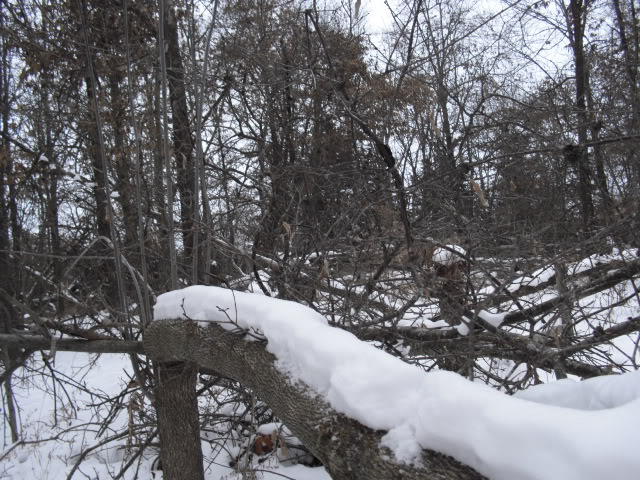
You can see in the background the thick red cedars that offer thermal protection while the hinged and downed trees and resulting re-growth offer both food and bedding.
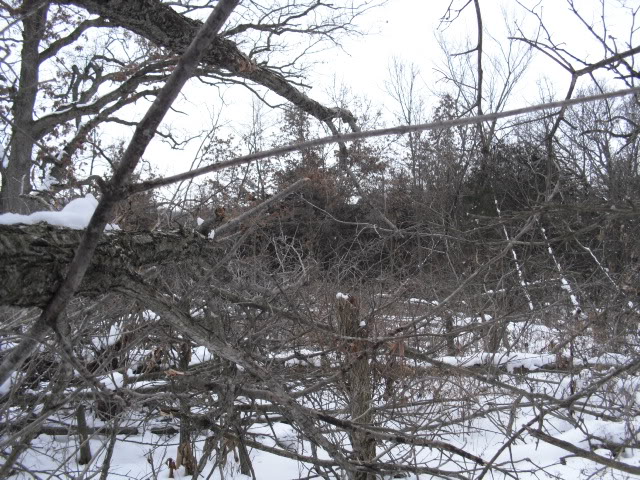
This pic shows a young white oak sapling that is now free to grow with most of the competition removed or culled. The parent tree in the background will yield more/better mast as well with less competing trees. In the far background you can also see an area that will be the focus of this winters TSI/Hinging efforts in what is now a fairly open area.
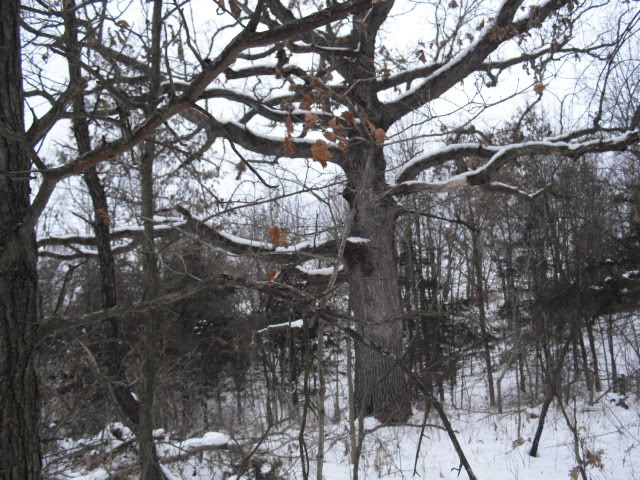
Severe winter weather is upon us now, snow is piling up, bitter winds howl with wind chills to minus 35 and the field and food plots already picked clean.
Still...the deer remain on my property in large part because of the readily available natural browse created by hinging cull trees and the ensuing safe bedding areas it creates.
Doe groups...
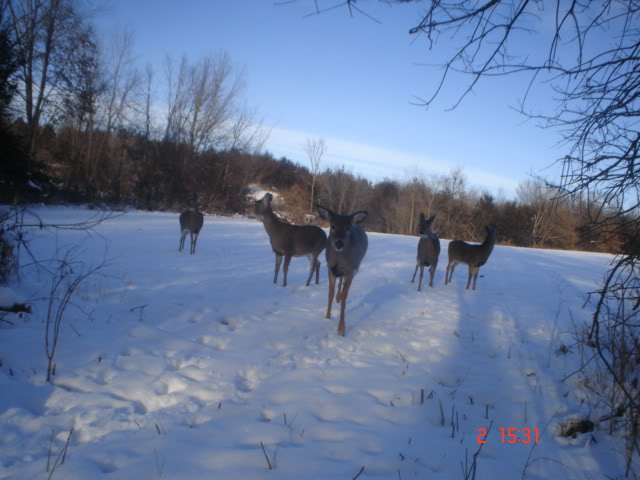
and mature bucks choose to stay here during the toughest time of the year...

It stands to reason that providing for their needs this time of year will keep them here year around as well.
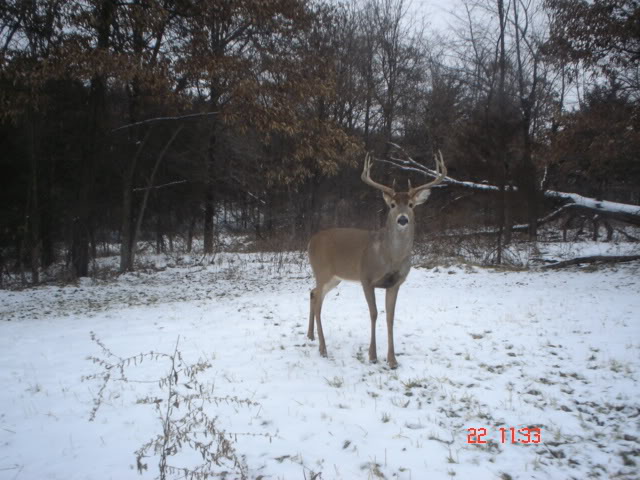
Focusing solely on food plots and hunting season attractants is a mistake that many landowners make because attracting and holding mature whitetails is a year around venture that requires extensive natural habitat improvments.
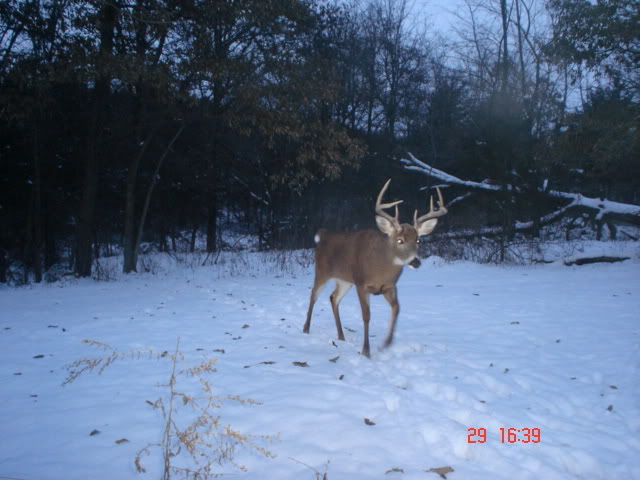
Make an effort to utilize every square inch of your property to the fullest and diversify your habitat by enhancing native browse and cover. Consider planting NWSG in open areas and encouraging both soft and hard mast producing trees and shrubs.
Make their home like yours...a feeding area, a bedding area and a living area all of which make them feel safe, secure and well fed...
You can see the vertical regrowth on this hinge cut tree while the tree itself remains alive, both offering browse that previously was unavailable.

You can see in the background the thick red cedars that offer thermal protection while the hinged and downed trees and resulting re-growth offer both food and bedding.

This pic shows a young white oak sapling that is now free to grow with most of the competition removed or culled. The parent tree in the background will yield more/better mast as well with less competing trees. In the far background you can also see an area that will be the focus of this winters TSI/Hinging efforts in what is now a fairly open area.

Severe winter weather is upon us now, snow is piling up, bitter winds howl with wind chills to minus 35 and the field and food plots already picked clean.
Still...the deer remain on my property in large part because of the readily available natural browse created by hinging cull trees and the ensuing safe bedding areas it creates.
Doe groups...

and mature bucks choose to stay here during the toughest time of the year...

It stands to reason that providing for their needs this time of year will keep them here year around as well.

Focusing solely on food plots and hunting season attractants is a mistake that many landowners make because attracting and holding mature whitetails is a year around venture that requires extensive natural habitat improvments.

Make an effort to utilize every square inch of your property to the fullest and diversify your habitat by enhancing native browse and cover. Consider planting NWSG in open areas and encouraging both soft and hard mast producing trees and shrubs.
Make their home like yours...a feeding area, a bedding area and a living area all of which make them feel safe, secure and well fed...
letemgrow
PMA Member
Make their home like yours...a feeding area, a bedding area and a living area all of which make them feel safe, secure and well fed...
No doubt DT!! Food plots are great, but only one part of the puzzle. A couple winters ago, I was doing a lot of TSI work and about the second week of it I was cutting down a hickory when I turned to the next tree, a doe was standing 40 yards away watching me. I had rang the dinner bell for her. :way:
They always follow what I do and eat the buds off the downed trees.
dbltree
Super Moderator
Since antlered seasons are over now and we'll be making some habitat enhancements via our chainsaws soon I'd like to keep this thread bumped up to encourage landowners to work on bottlenecks this winter.
This buck may not be a "monster" but he survived the seasons and hopefully will hang around. He's standing directly under my stand where I killed my buck this past fall...where deer after deer and a number of bucks have traveled through the bottleneck I created the winter before.

In previous pics I have shown the hinged trees creating the funnel and this pic shows three runways that are all in the natural portion of the travel corridor. The middle one is 20 yards and the farthest is barely 30.
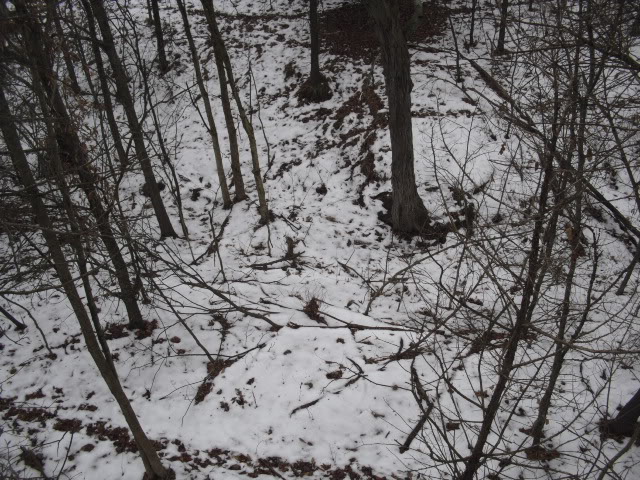
The bulk of the hinging is behind my stand and previously deer traveled across an 80 yard stretch and many down wind to make matters worse. An hour or so with a chainsaw corrected all that now and they travel thru there on a daily basis.
If you work on your funnels share some pics and thoughts to help others learn how to create their own bottlenecks and kep those deer within an easy 20 yard shot....
This buck may not be a "monster" but he survived the seasons and hopefully will hang around. He's standing directly under my stand where I killed my buck this past fall...where deer after deer and a number of bucks have traveled through the bottleneck I created the winter before.

In previous pics I have shown the hinged trees creating the funnel and this pic shows three runways that are all in the natural portion of the travel corridor. The middle one is 20 yards and the farthest is barely 30.

The bulk of the hinging is behind my stand and previously deer traveled across an 80 yard stretch and many down wind to make matters worse. An hour or so with a chainsaw corrected all that now and they travel thru there on a daily basis.
If you work on your funnels share some pics and thoughts to help others learn how to create their own bottlenecks and kep those deer within an easy 20 yard shot....
dbltree
Super Moderator
What trees to hinge?
For most of us the trees we qould choose to hinge would be those with low timber and wildlife value. Each landowner may have different goals, a tree that I consider a cull tree may not be for someone else. Most of us however would prefer not to inadvertently kill mast producing trees such as white and red oak species, chestnuts and high value timber trees such as black walnut.
The Timber Stand Improvement thread has pictures and information about a wide array of oak species and I find it easier to learn to identify oaks then ALL the other species. The following is a list of trees that i consider low in value and hinging them offers more to improve my habitat then leaving them alive or upright.
Green ash
The Emerald Ash Borer is rapidly decimating ash trees across the country so killing them is something each landowner will have to decide for themselves.
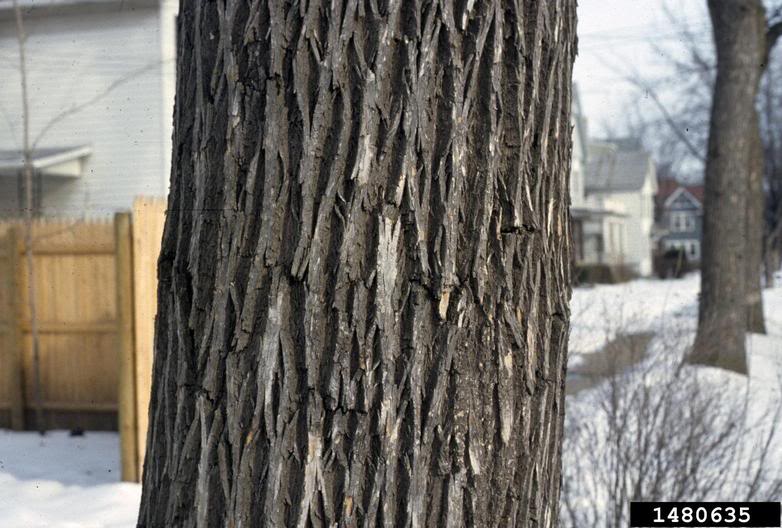
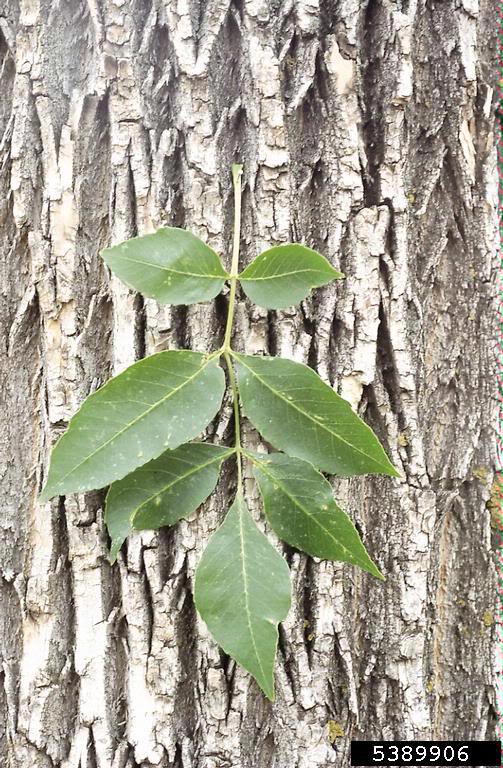
White ash
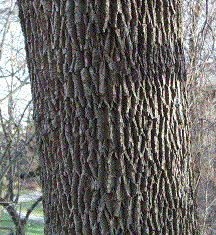
American Elm
Elm trees rarely last long in my area so I usually hinge them to encourage mast trees
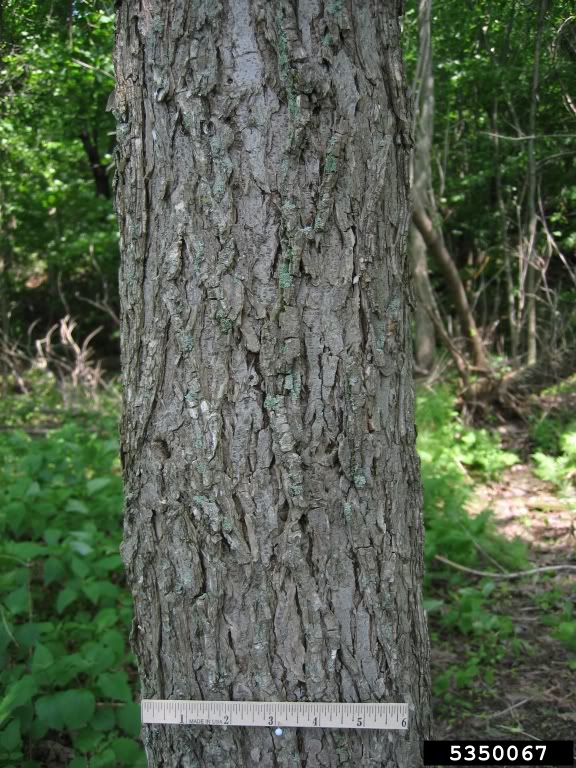
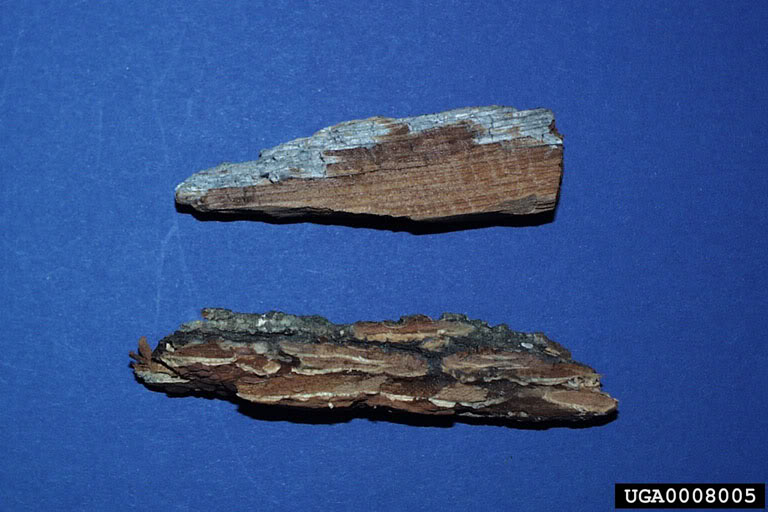
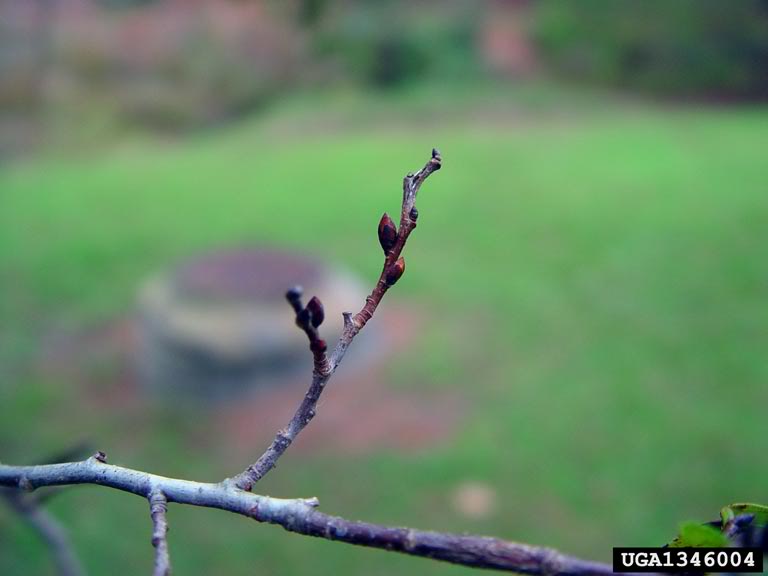
Slippery Elm
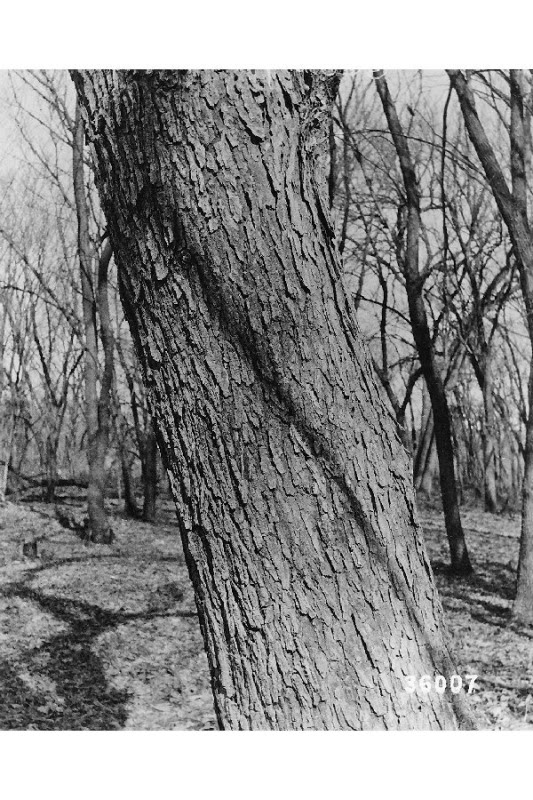
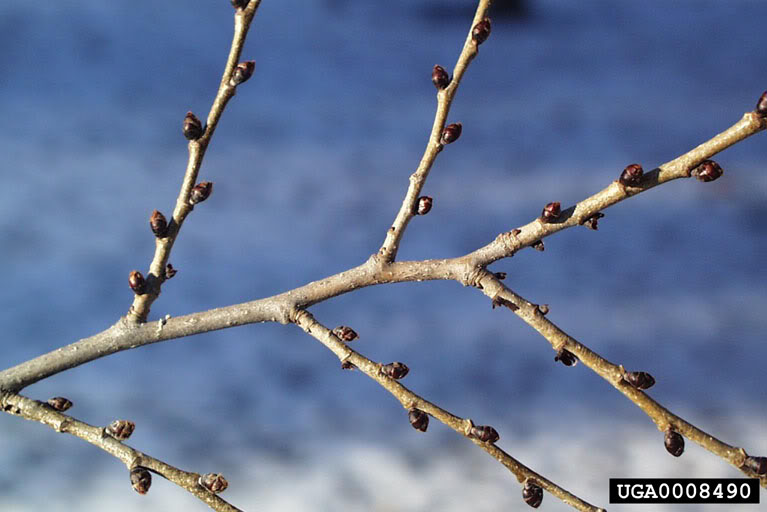
Basswood
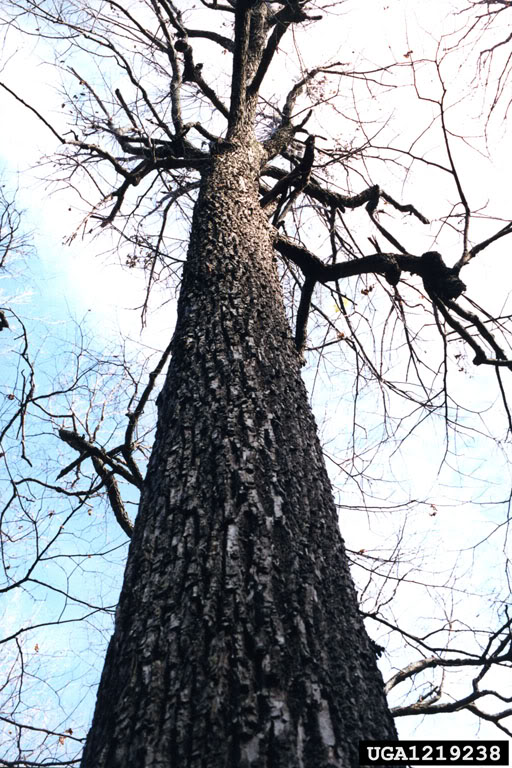
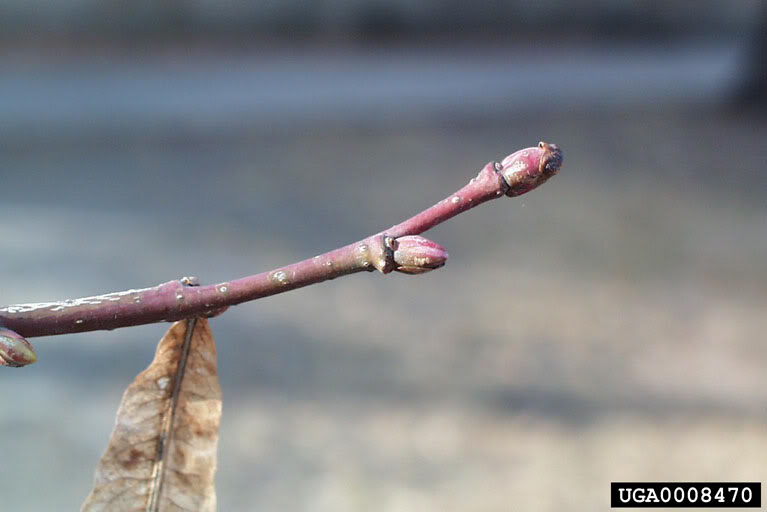
Box elder
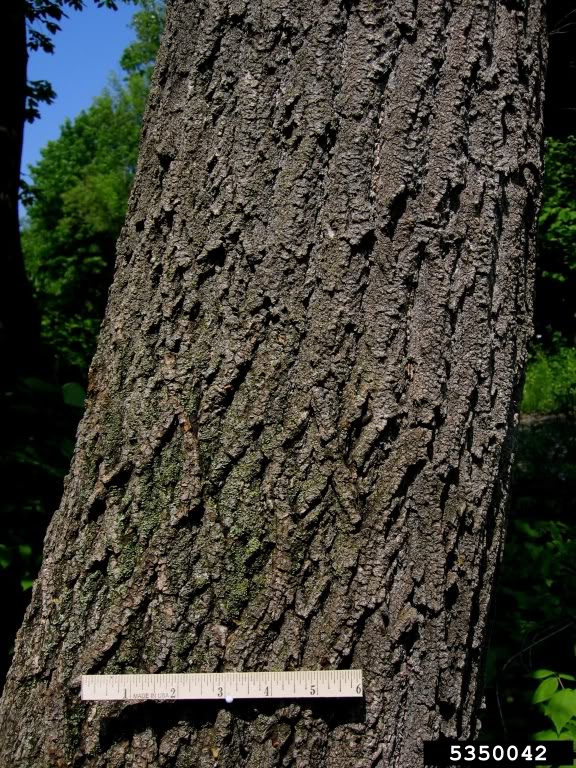
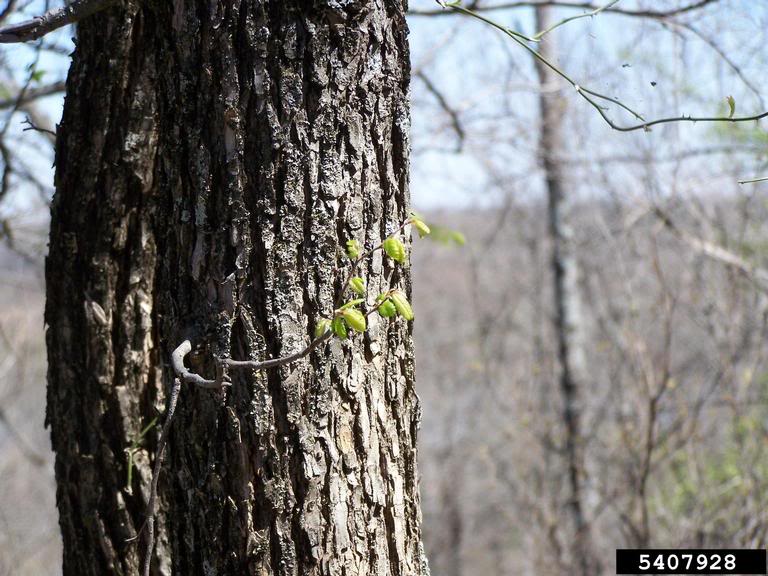
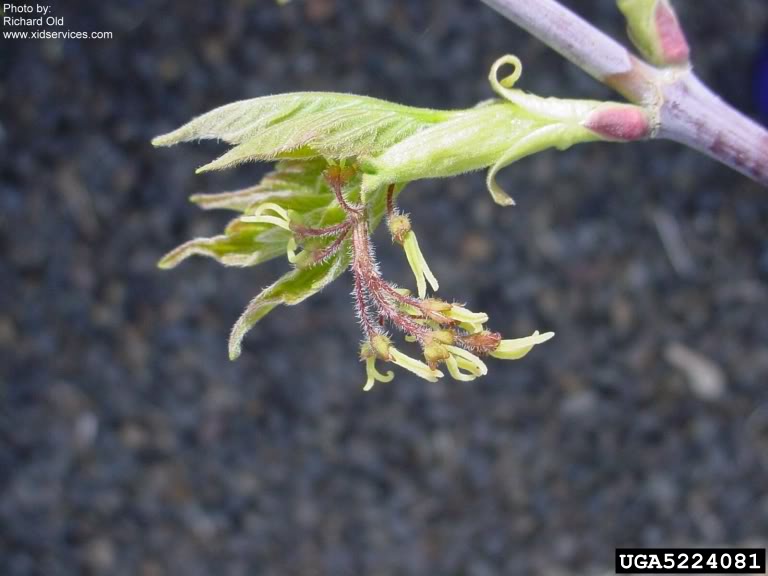
Bitternut Hickory Hickories are the most common tree in my area to hinge, they are shade tolerant and somewhat invasive preventing oak seedlings from growing.
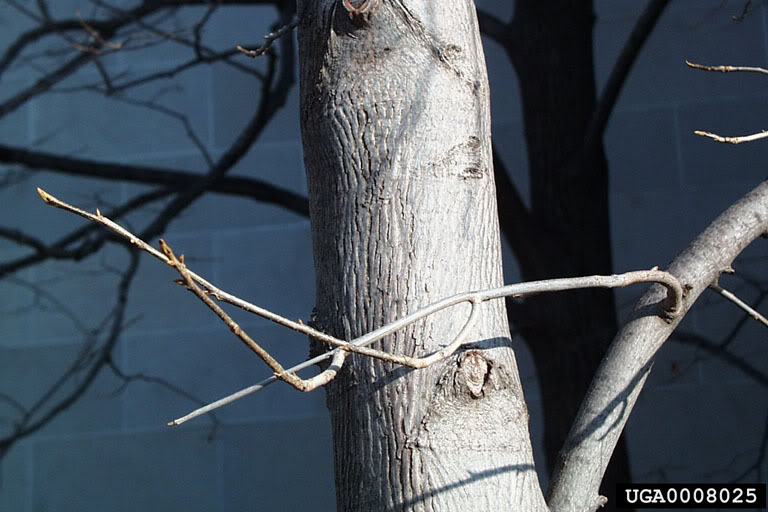
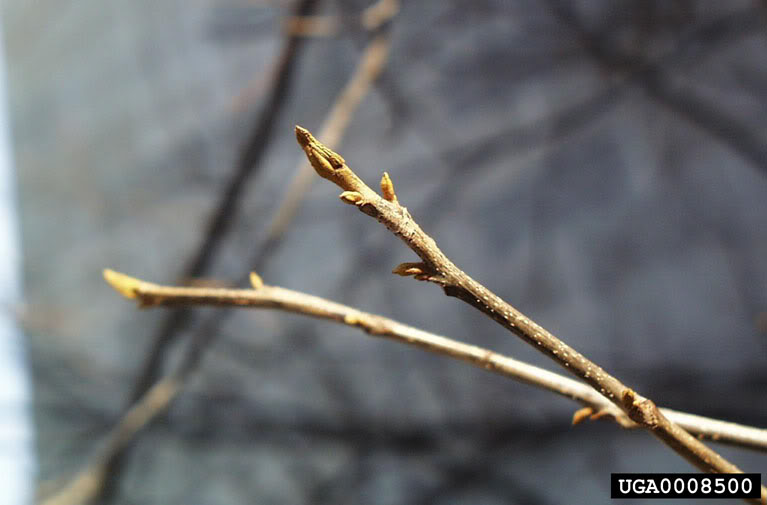
Mockernut Hickory
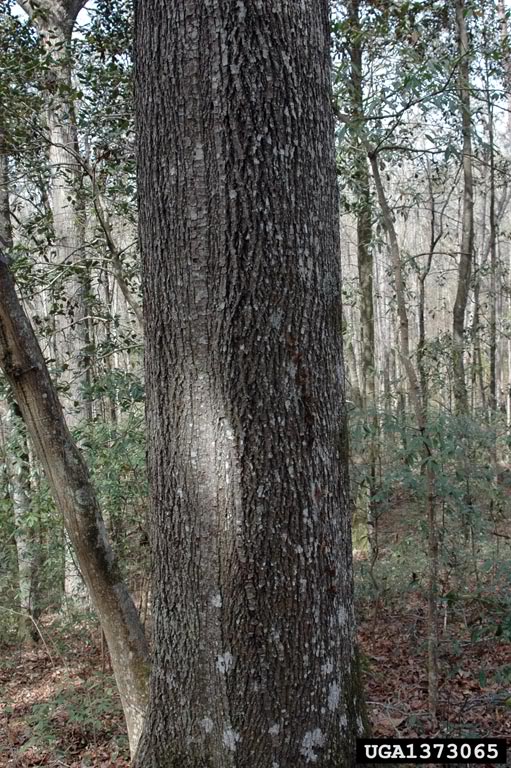
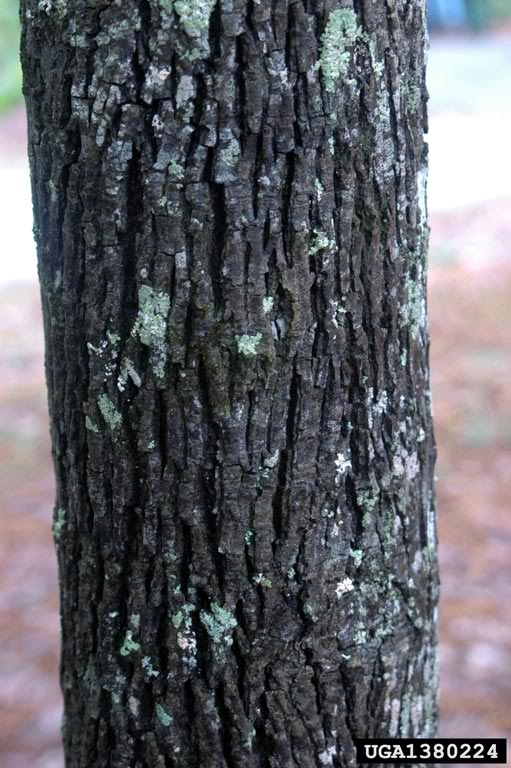
Shagbark Hickory
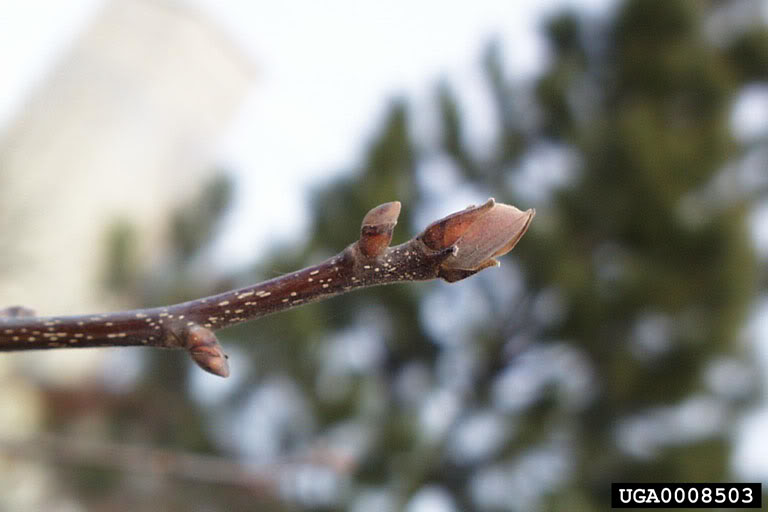
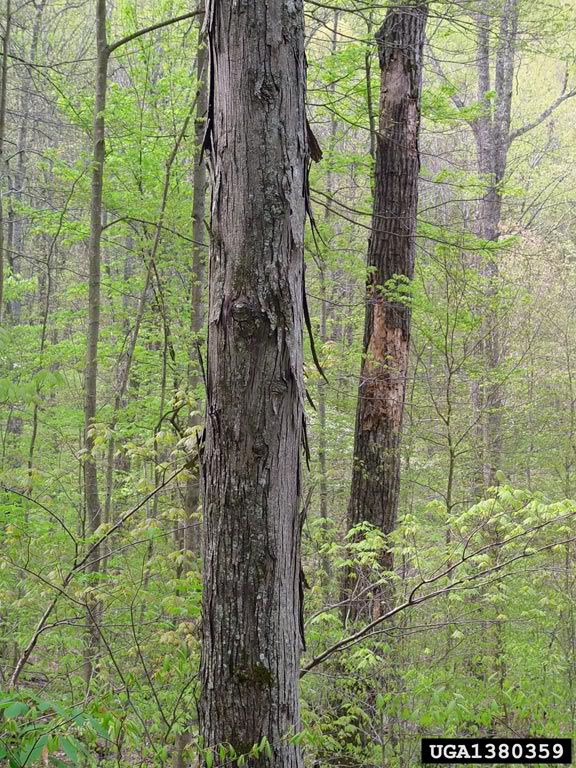
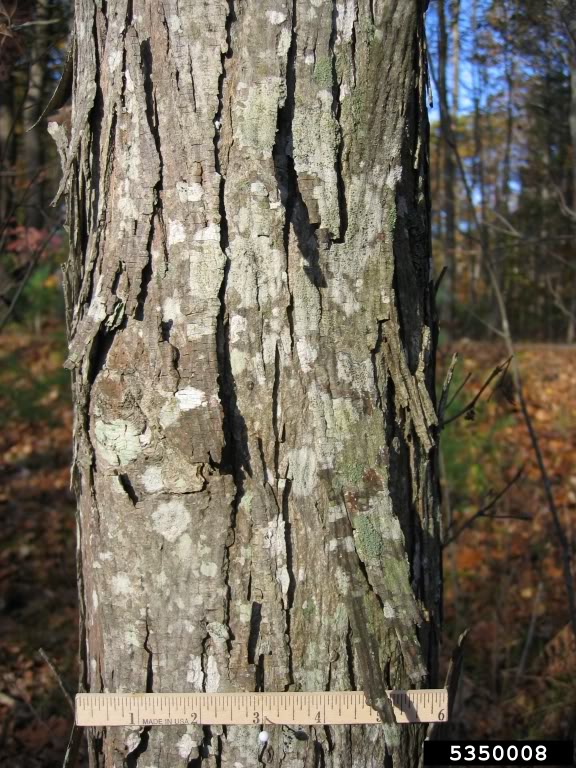
Shellbark Hickory
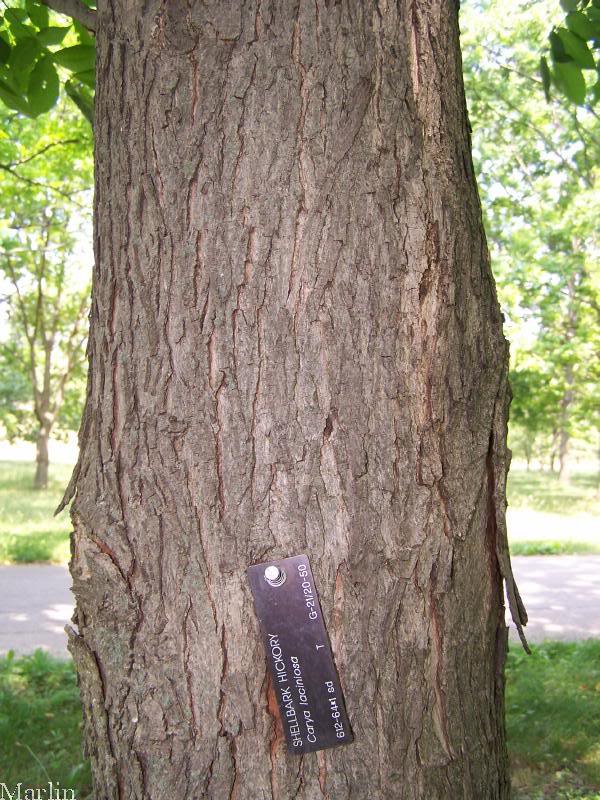
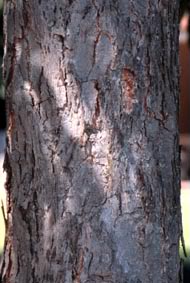
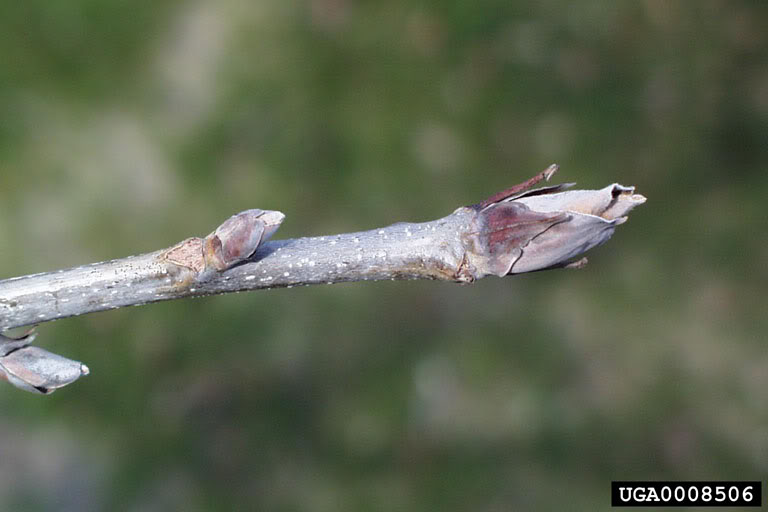
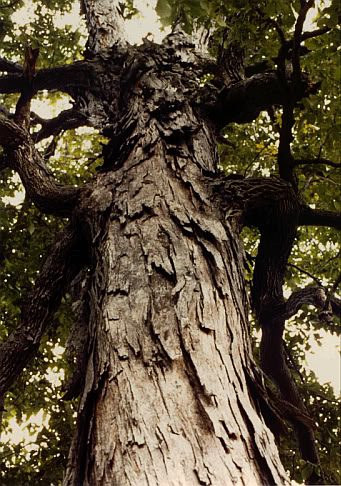
Ironwood
Ironwood is extremely invasive and shade tolerant and should be killed whenever you come across it.

It keeps it's leaves nearly all winter so it very noticiable in most timbered areas.

Black Locust
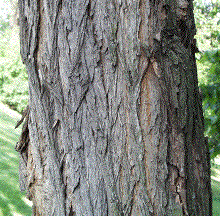
Honey Locust
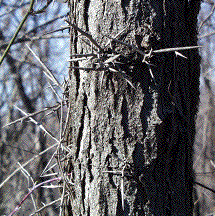
Silver Maple Maples are an extremely invasive shade tolerant tree with little value to most landowners managing for whitetails.
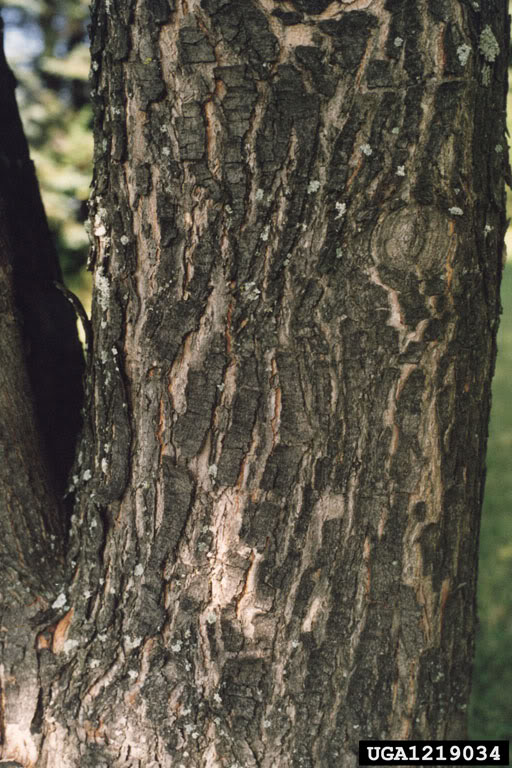
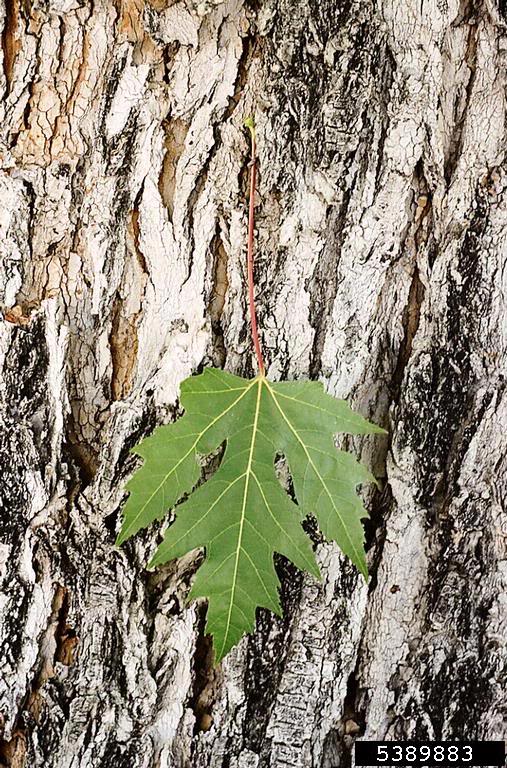
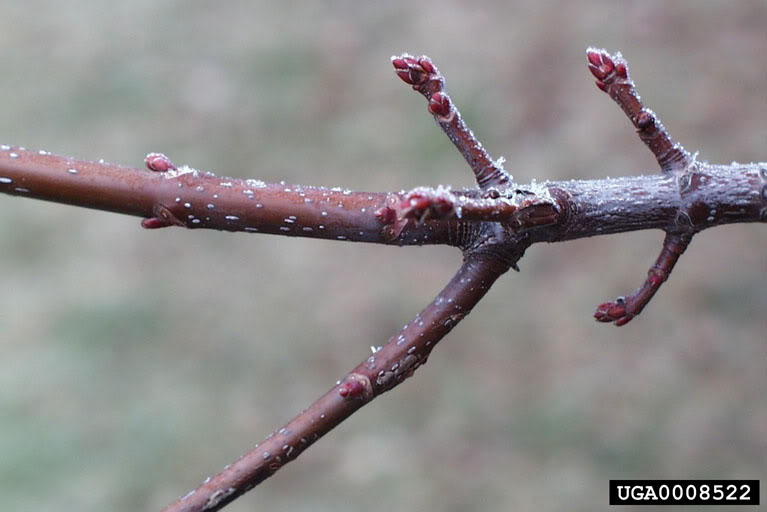
Sugar Maple
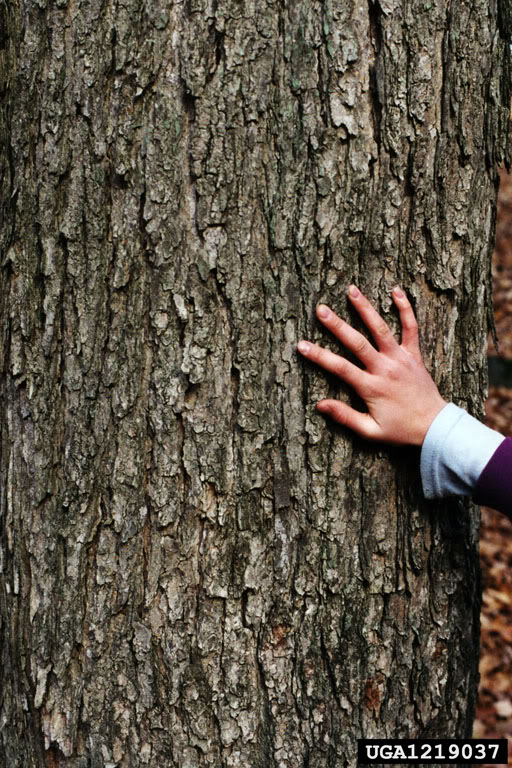
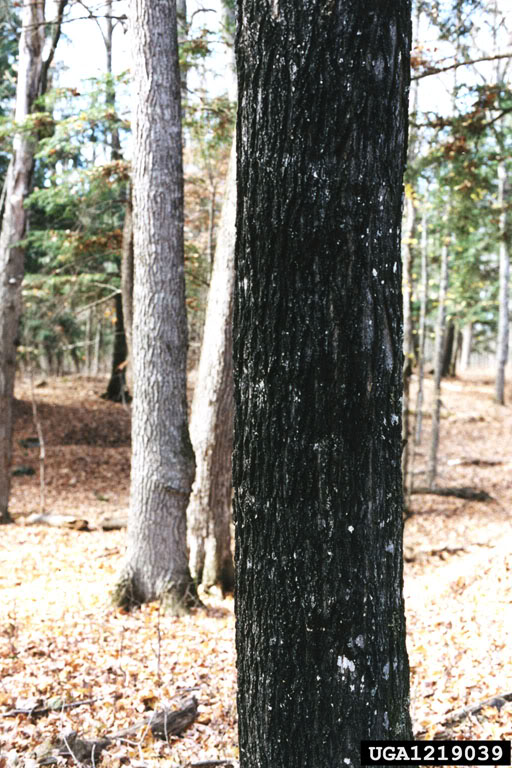
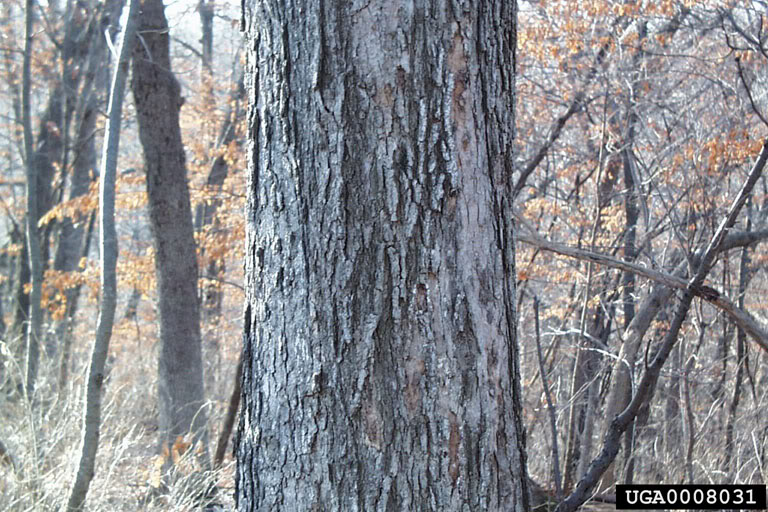
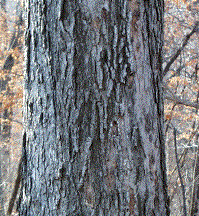
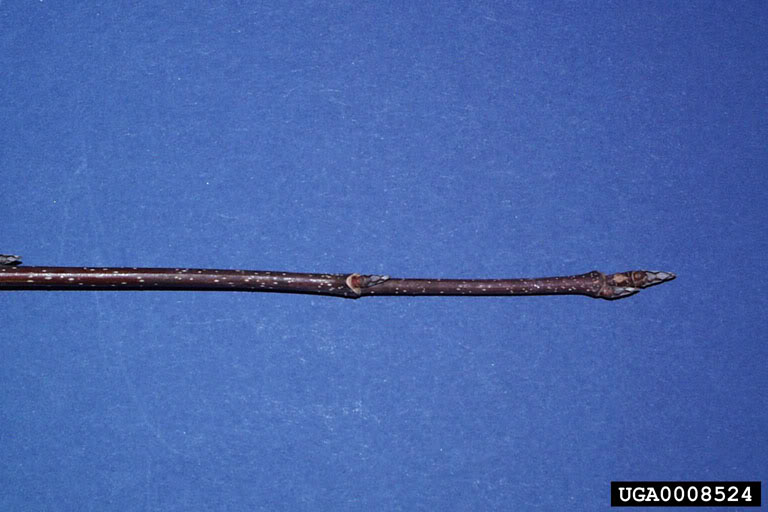
Shingle Oak Common and very invasive in my area, shingle oaks produce plentiful mast but have almost no value as timber. I don't attempt to eradicate them but do commnly hinge them to encourage better quality oaks and utilize the thick dense brushy tops for bedding and blocking.
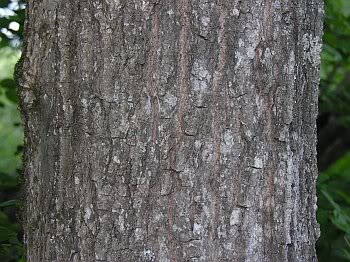
The leaves look nothing like either white or red oak species and the upper branches are often covered with black galls not found in other oaks. Shingle oaks commonly hold their leaves nearly all winter making them easy to identify.
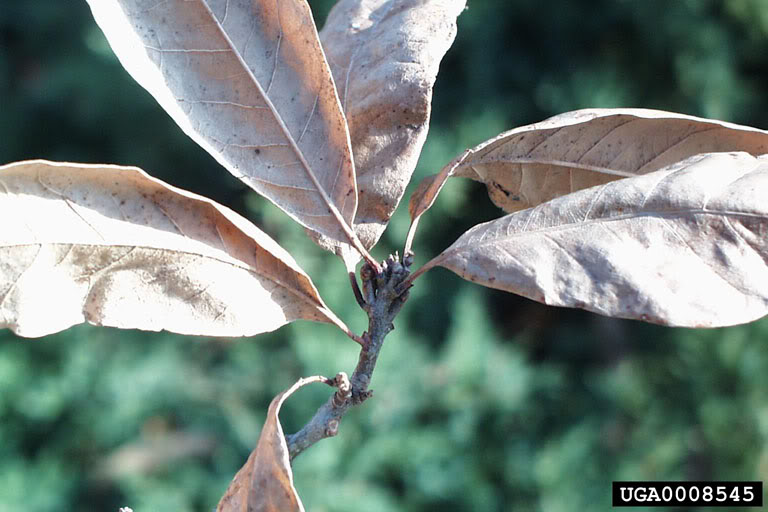
Osage Orange
These trees are commonly used for fence posts, bow making and other such uses so I hinge them only if necessary
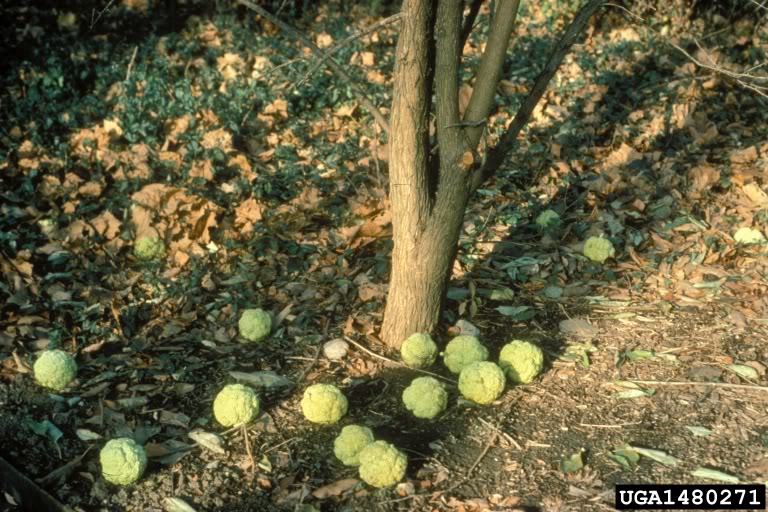
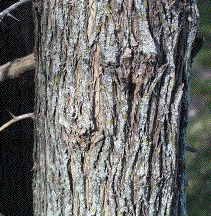
ISU Tree Index
Using Anatomy and Habitat to Identify a Tree
For most of us the trees we qould choose to hinge would be those with low timber and wildlife value. Each landowner may have different goals, a tree that I consider a cull tree may not be for someone else. Most of us however would prefer not to inadvertently kill mast producing trees such as white and red oak species, chestnuts and high value timber trees such as black walnut.
The Timber Stand Improvement thread has pictures and information about a wide array of oak species and I find it easier to learn to identify oaks then ALL the other species. The following is a list of trees that i consider low in value and hinging them offers more to improve my habitat then leaving them alive or upright.
Green ash
The Emerald Ash Borer is rapidly decimating ash trees across the country so killing them is something each landowner will have to decide for themselves.


White ash

American Elm
Elm trees rarely last long in my area so I usually hinge them to encourage mast trees



Slippery Elm


Basswood


Box elder



Bitternut Hickory Hickories are the most common tree in my area to hinge, they are shade tolerant and somewhat invasive preventing oak seedlings from growing.


Mockernut Hickory


Shagbark Hickory



Shellbark Hickory




Ironwood
Ironwood is extremely invasive and shade tolerant and should be killed whenever you come across it.

It keeps it's leaves nearly all winter so it very noticiable in most timbered areas.

Black Locust

Honey Locust

Silver Maple Maples are an extremely invasive shade tolerant tree with little value to most landowners managing for whitetails.



Sugar Maple





Shingle Oak Common and very invasive in my area, shingle oaks produce plentiful mast but have almost no value as timber. I don't attempt to eradicate them but do commnly hinge them to encourage better quality oaks and utilize the thick dense brushy tops for bedding and blocking.

The leaves look nothing like either white or red oak species and the upper branches are often covered with black galls not found in other oaks. Shingle oaks commonly hold their leaves nearly all winter making them easy to identify.

Osage Orange
These trees are commonly used for fence posts, bow making and other such uses so I hinge them only if necessary


ISU Tree Index
Using Anatomy and Habitat to Identify a Tree
dbltree
Super Moderator
There are several train's of thought on creating individual beds for deer that include "tying" trees down to create over head cover, attempting to create "buck" and "doe" beds. The controversy often leads to arguments and name bashing which is completely counterproductive to helping others learn how to enhance their habitat.
That being said I base what I share on factual observations back up by pictures that allow landowners to see how deer react to various habitat enhancements such as hinge cutting. I find first of all that large, thick sanctuaries where deer are unmolested tend to hold the most deer and mature whitetail bucks seek out that type of environment.
<O ></O
></O >
>
I am able, very easily to create "overhead" cover without tying, just by hinging trees that often come to rest on adjacent trees such as this situation.
<O ></O
></O >
>
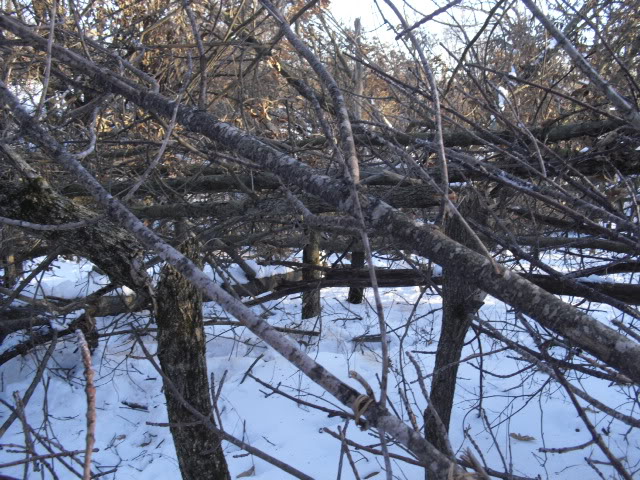
<O ></O
></O >
>
Suffice it to say that after years of hinging trees I have inadvertently created all types of "overhead' cover from 3-4' to 10-15' above the ground but thus far I have not found deer using those types of situations.
<O ></O
></O >
>
What I do find is that deer prefer a slight rise or a ridge where they can lay "behind" a hinge cut tree and see danger approach from below. When that hinged area either grows up to some light brush or has some already, the area will quickly be covered with fresh beds.
<O ></O
></O >
>
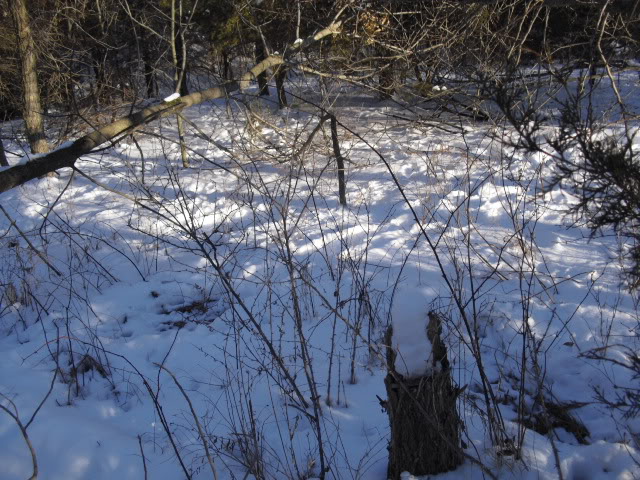
<O ></O
></O >
>
The following pics are recent hinging projects, some only days old and while a little hard to see, all have beds located a few feet to 20 yards behind the hinged trees.
<O ></O
></O >
>
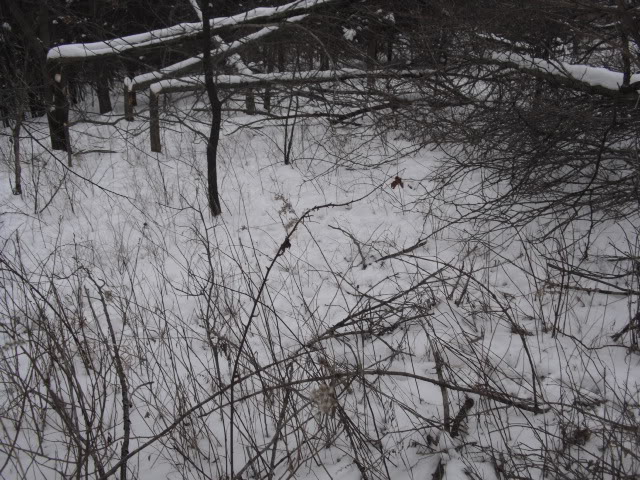
<O ></O
></O >
>
I have found no beds using overhead cover as of yet with the exception of live cedar trees or large shrubs where they often lay in front of or barely under an overhanging branch using the tree as a backdrop.
<O ></O
></O >
>
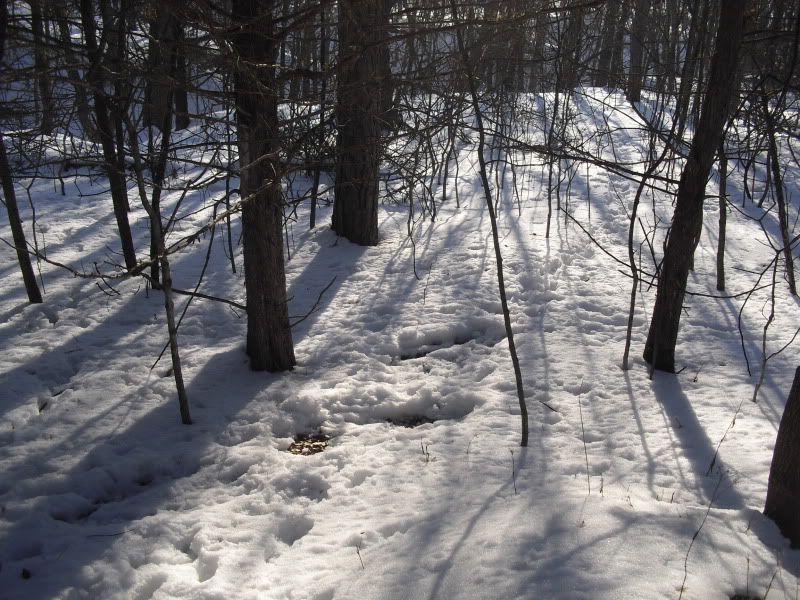
<O ></O
></O >
>
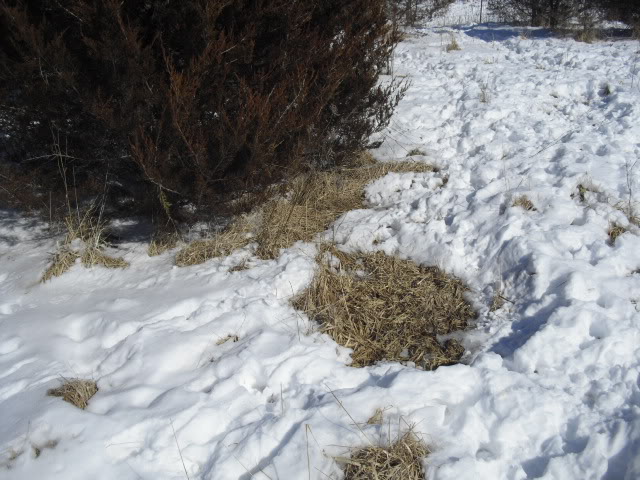
<O ></O
></O >
>
In the hinged areas though, they tend to be bedded out in the open preferring to peer under the hinged trees for some distance back.
<O ></O
></O >
>
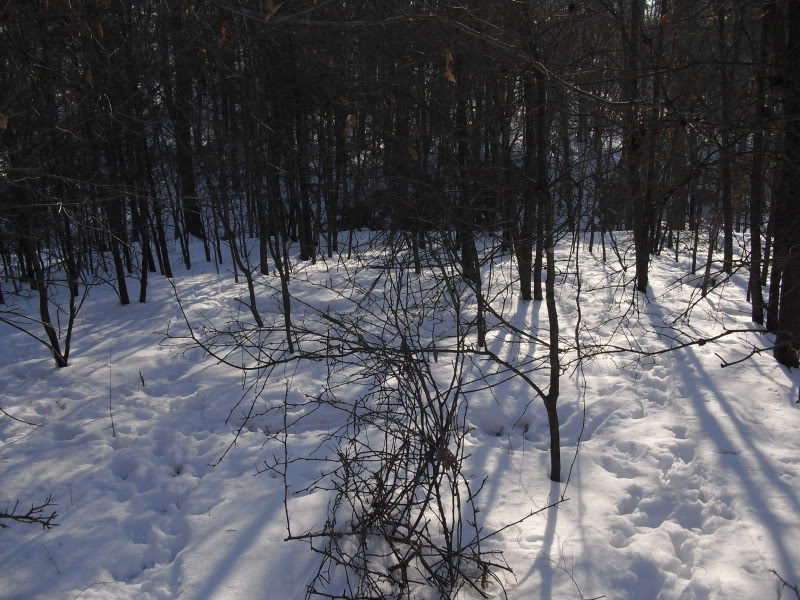
<O ></O
></O >
>
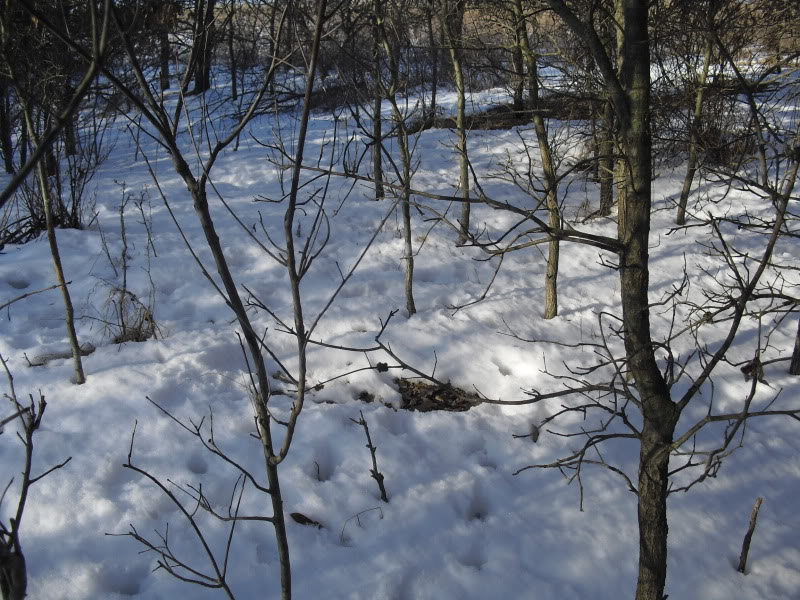
<O ></O
></O >
>
Each landowner should be willing to try different things but the focus should be on creating large, thick, safe areas of cover versus attempting to create and individual bed.
<O ></O
></O >
>
Observe whitetails habits in your area, don't place all the chips on any one persons advice, take lots of great ideas, do some experimenting and then find out what really works and what doesn't....then share it with others to help them enhance their own whitetail habitat....
<O ></O
></O >
>
<O ></O
></O >
>
That being said I base what I share on factual observations back up by pictures that allow landowners to see how deer react to various habitat enhancements such as hinge cutting. I find first of all that large, thick sanctuaries where deer are unmolested tend to hold the most deer and mature whitetail bucks seek out that type of environment.
<O
I am able, very easily to create "overhead" cover without tying, just by hinging trees that often come to rest on adjacent trees such as this situation.
<O

<O
Suffice it to say that after years of hinging trees I have inadvertently created all types of "overhead' cover from 3-4' to 10-15' above the ground but thus far I have not found deer using those types of situations.
<O
What I do find is that deer prefer a slight rise or a ridge where they can lay "behind" a hinge cut tree and see danger approach from below. When that hinged area either grows up to some light brush or has some already, the area will quickly be covered with fresh beds.
<O

<O
The following pics are recent hinging projects, some only days old and while a little hard to see, all have beds located a few feet to 20 yards behind the hinged trees.
<O

<O
I have found no beds using overhead cover as of yet with the exception of live cedar trees or large shrubs where they often lay in front of or barely under an overhanging branch using the tree as a backdrop.
<O

<O

<O
In the hinged areas though, they tend to be bedded out in the open preferring to peer under the hinged trees for some distance back.
<O

<O

<O
Each landowner should be willing to try different things but the focus should be on creating large, thick, safe areas of cover versus attempting to create and individual bed.
<O
Observe whitetails habits in your area, don't place all the chips on any one persons advice, take lots of great ideas, do some experimenting and then find out what really works and what doesn't....then share it with others to help them enhance their own whitetail habitat....
<O
<O
Thanks for adding more tree IDs. Never really pay much attention to elm other than looking up at one and saying 'there is wasted deer food' and hit the saw throttle. Winged elm is easy to spot. I'll take a closer look at slippery or american buds then compare to your pics. Thanks again those pics are a big help...very nice touch! 
Roughleaf and flowering dogwood trees resprout nicely to disturbance. They can get tall enough in our area to limit deer browsing. Rather than hinge one a guy could just lay a top on it and make it bend to browse level. The trees I want to take a pic of have resprouted immensly at the bend. I'd hate to take a chance on killing dogwood by girdling, not many of them around now....think the drought were hard on them.
Bois d Arc is one of my favorites. In falls with less than abundant hard mast, several doe groups will make vigils twice a day to the few scattered trees around my rifle stand. Must be like candy cuz they'll scarf up every leaf that falls! :way:
Just curious if you have black hickory or winged elm in your area? Both hinge nicely, but black hickory in bottom land could have timber value. Deer in our area will browse winged elm in winter if not much else is available...pretty low quality by then.
Here is a link with monthly CP values for some of the hinge candidates you mentioned. Thought I'd share! http://www.noble.org/WebApps/AgExchange/AssetQueries/ArticleTemplate_164_97255_83970.html
Roughleaf and flowering dogwood trees resprout nicely to disturbance. They can get tall enough in our area to limit deer browsing. Rather than hinge one a guy could just lay a top on it and make it bend to browse level. The trees I want to take a pic of have resprouted immensly at the bend. I'd hate to take a chance on killing dogwood by girdling, not many of them around now....think the drought were hard on them.
Bois d Arc is one of my favorites. In falls with less than abundant hard mast, several doe groups will make vigils twice a day to the few scattered trees around my rifle stand. Must be like candy cuz they'll scarf up every leaf that falls! :way:
Just curious if you have black hickory or winged elm in your area? Both hinge nicely, but black hickory in bottom land could have timber value. Deer in our area will browse winged elm in winter if not much else is available...pretty low quality by then.
Here is a link with monthly CP values for some of the hinge candidates you mentioned. Thought I'd share! http://www.noble.org/WebApps/AgExchange/AssetQueries/ArticleTemplate_164_97255_83970.html
letemgrow
PMA Member
I have noticed on my farm that deer browse black locust readily....I literally have one seedling out of 10 mature trees and have never found another yet in 6 years!! Sure wish I had more black locust since they make great fence posts and I have a lot of fence to put in 
I have not cut down any baswoods either as I had very few to start with and bees are highly fond of them. They are also great for making duck decoys.
Shingle oaks run rampant on my farm and they get cut out when other more desirable trees are close by (swamp white, bur, white, northern red etc). I do not treat the stumps as I encourage them to grow back since they send up lots of shoots and deer seem to like the browse. They also create great thickets from the downed tops and re-sprouts.
I have not cut down any baswoods either as I had very few to start with and bees are highly fond of them. They are also great for making duck decoys.
Shingle oaks run rampant on my farm and they get cut out when other more desirable trees are close by (swamp white, bur, white, northern red etc). I do not treat the stumps as I encourage them to grow back since they send up lots of shoots and deer seem to like the browse. They also create great thickets from the downed tops and re-sprouts.
dbltree
Super Moderator
Helped a friend hinge some trees last week...
Mostly bitternut and shagbark hickory, elm and ironwood

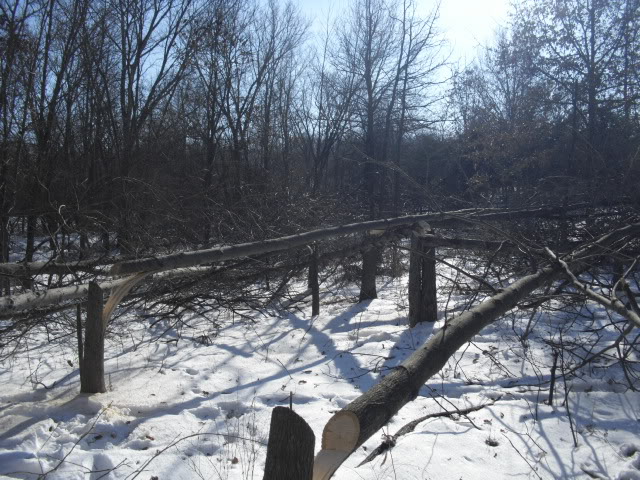
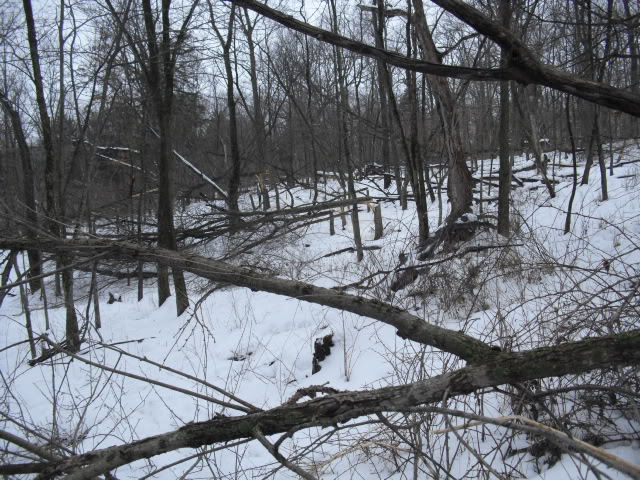
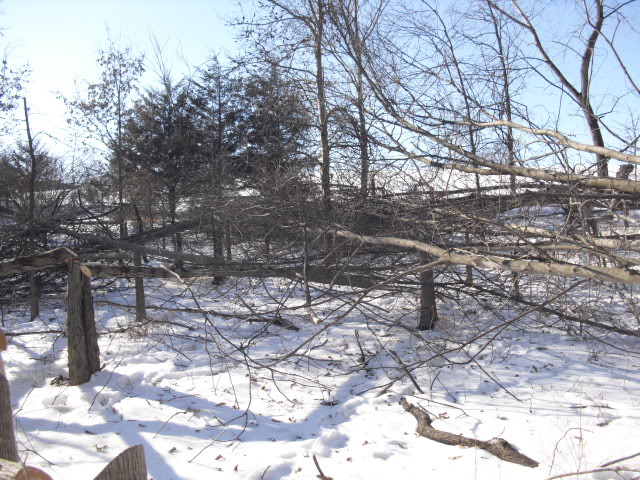
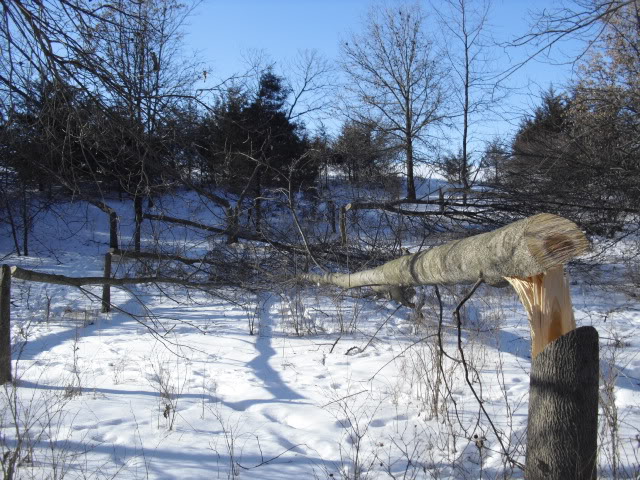
There were sporadic red, burr and white oaks through out the area so hinging will not only encourage new browse but give seedling oaks a chance to survive in the now open canopy.
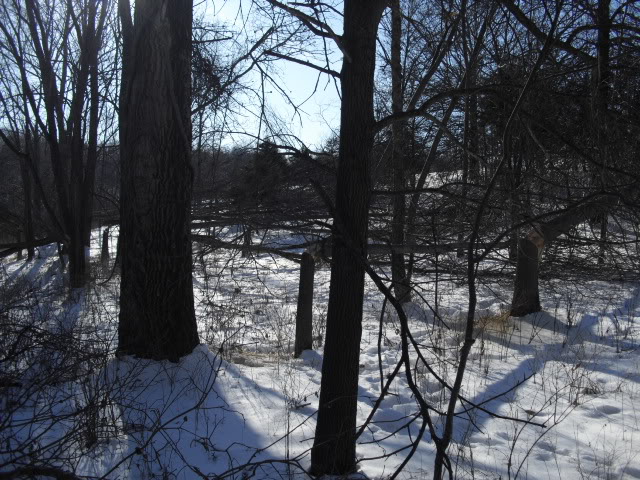
We moved up on another ridge where there were plenty of natural beds, all using any type of downfall or smll bush for a backdrop and then facing south on the southern side of the ridge.
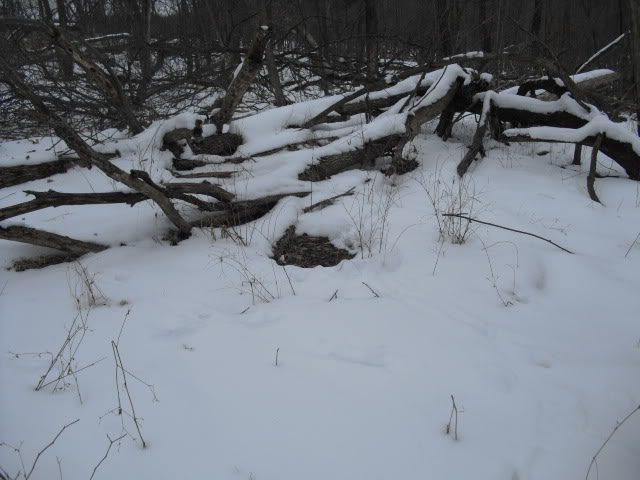
Observing natural bedding helps us learn more about whitetail bedding habits and gives us clues on where to perpetuate new, better cover.
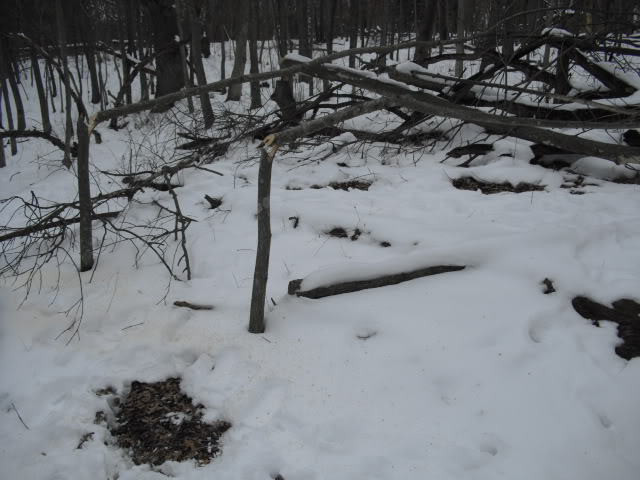
You can see here how open the timber is and some of our hinge cuts around the current beds.
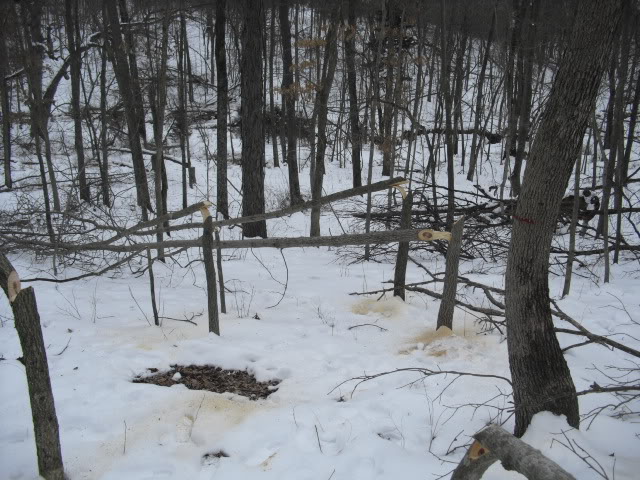

We have a lot to do yet but we got a decent start at thickening up this ridge
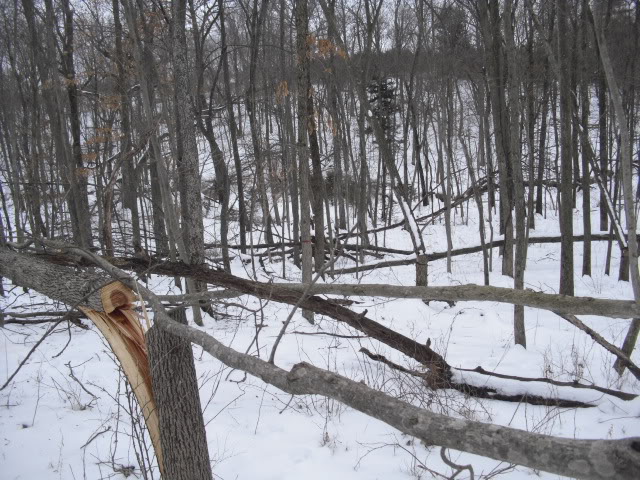
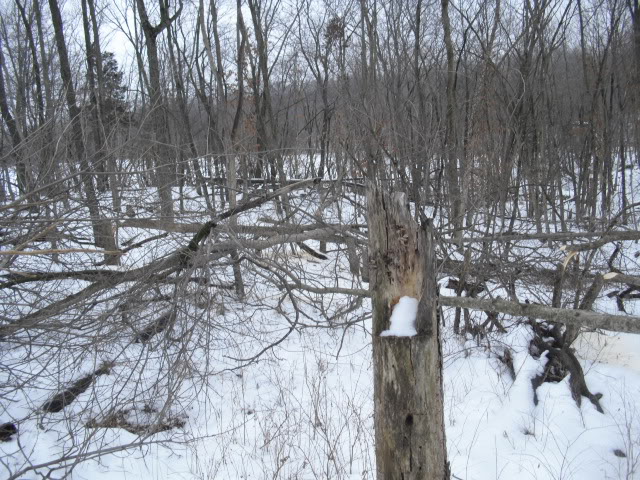
TSI had already been done in this timber but while it release some crop trees, TSI alone did little to encourage new bedding.
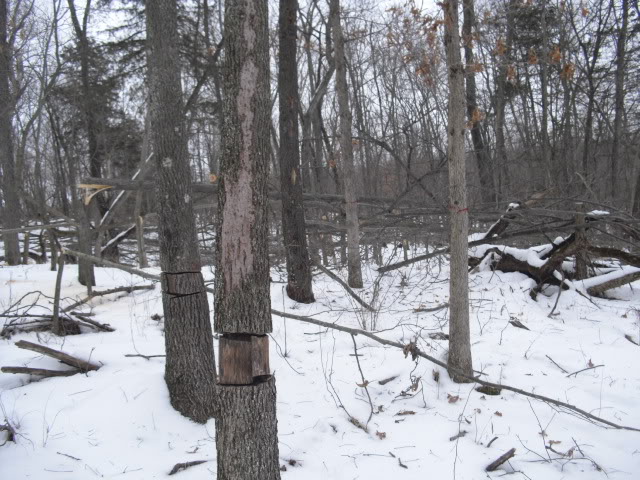
We girdled some huge locust trees that were not safe to attempt to cut but otherwise hinged all smaller trees...gonna make a huge difference in helping him hold whitetails on his property...
Mostly bitternut and shagbark hickory, elm and ironwood





There were sporadic red, burr and white oaks through out the area so hinging will not only encourage new browse but give seedling oaks a chance to survive in the now open canopy.

We moved up on another ridge where there were plenty of natural beds, all using any type of downfall or smll bush for a backdrop and then facing south on the southern side of the ridge.

Observing natural bedding helps us learn more about whitetail bedding habits and gives us clues on where to perpetuate new, better cover.

You can see here how open the timber is and some of our hinge cuts around the current beds.


We have a lot to do yet but we got a decent start at thickening up this ridge


TSI had already been done in this timber but while it release some crop trees, TSI alone did little to encourage new bedding.

We girdled some huge locust trees that were not safe to attempt to cut but otherwise hinged all smaller trees...gonna make a huge difference in helping him hold whitetails on his property...
letemgrow
PMA Member
Looks great Paul!! Those south facing slopes are great bedding areas where the sun can reach them and they have a backdrop to keep the wind off them from the north.
Here are some examples on my place. The deer love this spot because there is a thick cedar ridge up on the top and it slopes down from the north so hardly any wind gets into this area. The south facing portion is very open so the deer can soak up the sun while staying out of the wind. It's a win win for them.
This pic is me facing north so you can see why the deer like this spot. Open on the south and brush covered on the north side.

Here is another bed close by where you can see how they sun in wintertime.

Here is the south facing view from the spot. Very open so sunlight can penetrate.

The north facing view, you can see all those cedars and brush do not let the wind penetrate and they are in a bowl so to speak where any wind goes overtop them and they stay nice and toasty here.

Here are some examples on my place. The deer love this spot because there is a thick cedar ridge up on the top and it slopes down from the north so hardly any wind gets into this area. The south facing portion is very open so the deer can soak up the sun while staying out of the wind. It's a win win for them.
This pic is me facing north so you can see why the deer like this spot. Open on the south and brush covered on the north side.

Here is another bed close by where you can see how they sun in wintertime.

Here is the south facing view from the spot. Very open so sunlight can penetrate.

The north facing view, you can see all those cedars and brush do not let the wind penetrate and they are in a bowl so to speak where any wind goes overtop them and they stay nice and toasty here.

Last edited:
dbltree
Super Moderator
Thanks for sharing the pictures Phil! :way:
I'm not sure I have an answer to that and it's something we need to observe over the next few years and see if there is indeed and optimum height that deer seem to prefer ot if it really isn't important? So far I find deer tend to lay where they can see under the hinged tree or with it to their backs but with enough people sharing observations perhaps we'll have a better idea in the future.
Observation is how we learn and this is the time of year to be out there observing and learning about whitetail habitat. Where DO they bed and why? Individual beds may or may not have been used by a buck but overall hiking our land can yield clues and ideas to what they will and will not utilize for bedding.
Another thing to note is that if deer are unmolested then they may not require as thick of habitat as those that endure constant harassment and those type of things vary widely among landowners.
The following are more pictures of recent beds on my own land and many are in semi-open areas, all on south or east facing ridges. All with cover at their back, sun warming them and not necessarily an extremely thick type of habitat but rather they are infrequently bothered by anyone.
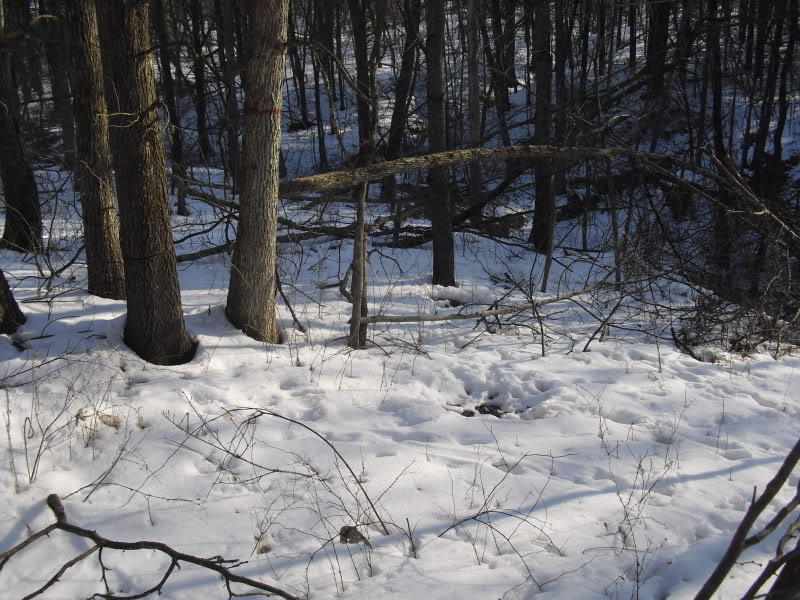
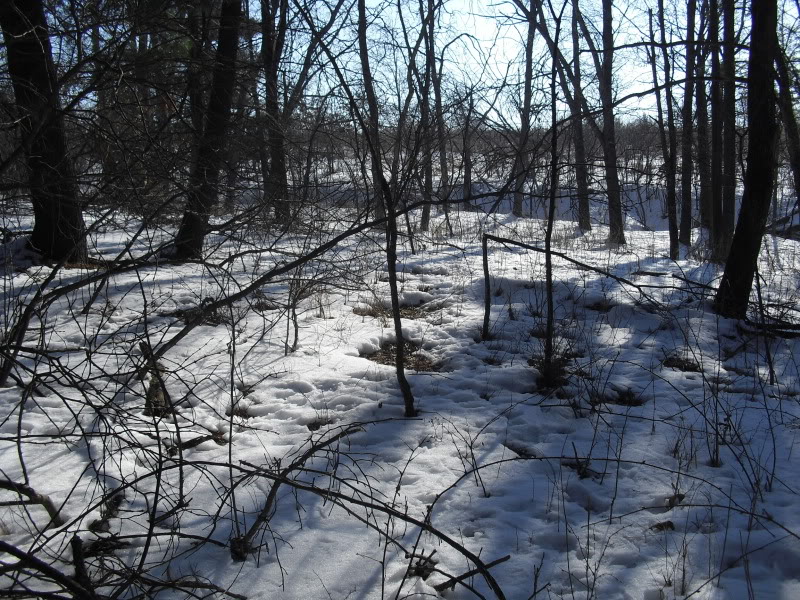
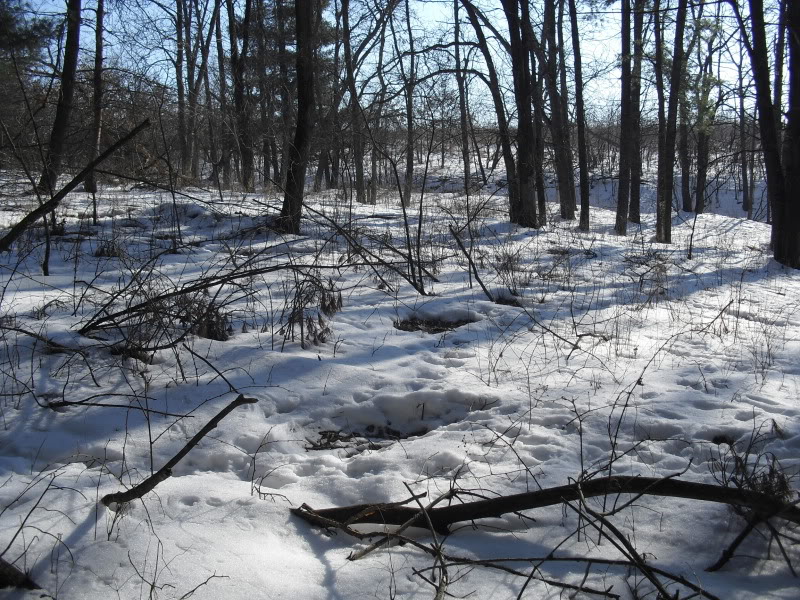
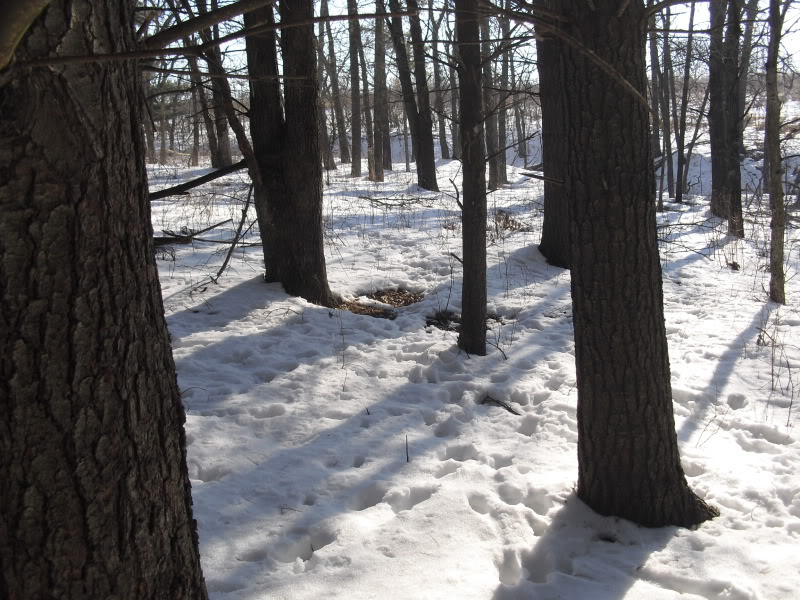


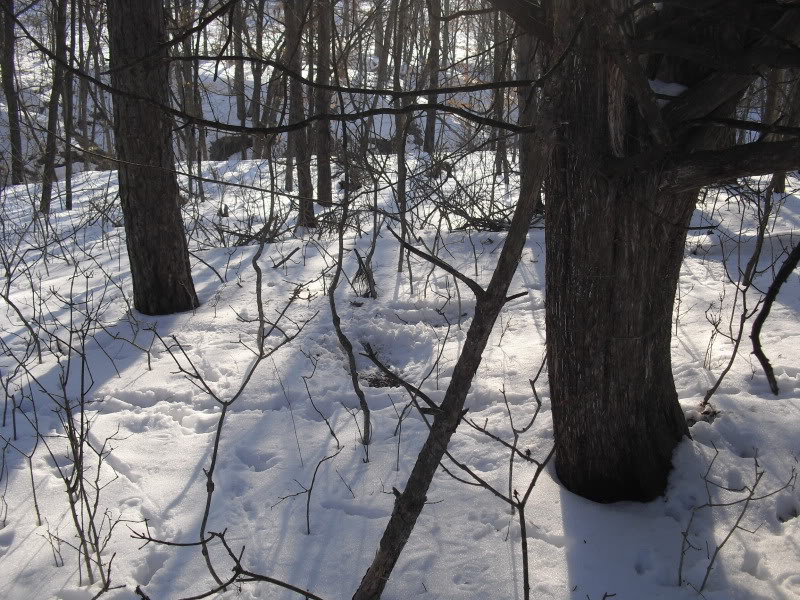


These deer did have thicker cover available and almost always chose some brushy type cover around them verus wide open timber but topography plays a huge part in where they choose to bed.
Screening cover around the timber, around the entire property then becomes extremely important so that deer feel safe and comfortable within the their "fortress" so to speak.
Enjoy a late winter hike on a sunny day and find out what habitat is being used or unused and why? If they are not bedding on your land are they coming there to feed and returning to a neighboring bedding area...is so what is different.
Use Google Earth or some such to "see" what the neighbors have that you don't and sometimes it may just be a larger more protective atmosphere with the same habitat....
what height is optimal? (of hinge cut)
I'm not sure I have an answer to that and it's something we need to observe over the next few years and see if there is indeed and optimum height that deer seem to prefer ot if it really isn't important? So far I find deer tend to lay where they can see under the hinged tree or with it to their backs but with enough people sharing observations perhaps we'll have a better idea in the future.
Observation is how we learn and this is the time of year to be out there observing and learning about whitetail habitat. Where DO they bed and why? Individual beds may or may not have been used by a buck but overall hiking our land can yield clues and ideas to what they will and will not utilize for bedding.
Another thing to note is that if deer are unmolested then they may not require as thick of habitat as those that endure constant harassment and those type of things vary widely among landowners.
The following are more pictures of recent beds on my own land and many are in semi-open areas, all on south or east facing ridges. All with cover at their back, sun warming them and not necessarily an extremely thick type of habitat but rather they are infrequently bothered by anyone.









These deer did have thicker cover available and almost always chose some brushy type cover around them verus wide open timber but topography plays a huge part in where they choose to bed.
Screening cover around the timber, around the entire property then becomes extremely important so that deer feel safe and comfortable within the their "fortress" so to speak.
Enjoy a late winter hike on a sunny day and find out what habitat is being used or unused and why? If they are not bedding on your land are they coming there to feed and returning to a neighboring bedding area...is so what is different.
Use Google Earth or some such to "see" what the neighbors have that you don't and sometimes it may just be a larger more protective atmosphere with the same habitat....
letemgrow
PMA Member
Enjoy a late winter hike on a sunny day and find out what habitat is being used or unused and why?
I have learned a ton just by walking the farm after season when I am out doing TSI work about where deer like to bed and stay and why. Sure makes it easier to improve the rest of the property when you figure out what is working and why. :way:
letemgrow
PMA Member
Here is a lane I left on a south facing hillside, it should work great to thicken things up for bedding and also I was able to cut the trees to leave any easy path to intercept the deer on the way to the apple orchard that is up the hill. Killed many birds with one stone!! Released some quality oaks, more and better browse, made bedding cover and narrowed the travel lane to a predictable pattern.


dbltree
Super Moderator
If your convinced that raking leaves out of deer beds and tying trees over has worked to help you both hold and harvest mature bucks, then you sure ought to keep doing it.
Too many folks have tried it an been deeply dissapointed however so I continue to share what has worked for us and that's a combination of hinging large areas and using conifer plantings to provide screens and safe bedding.
These trees have been hinged for several years now and reveal how much "brush" or cover they create in time!
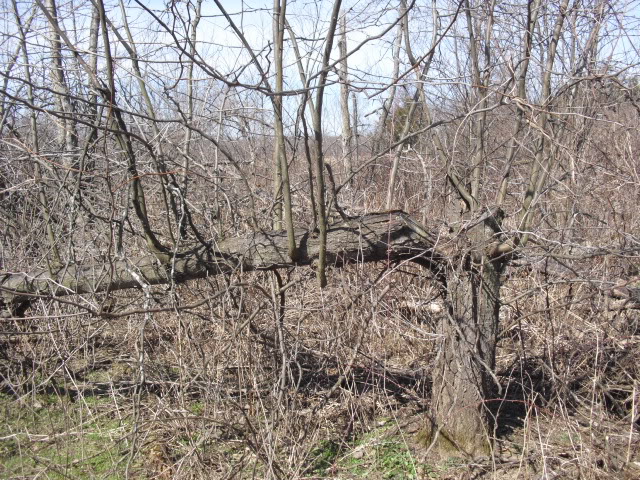
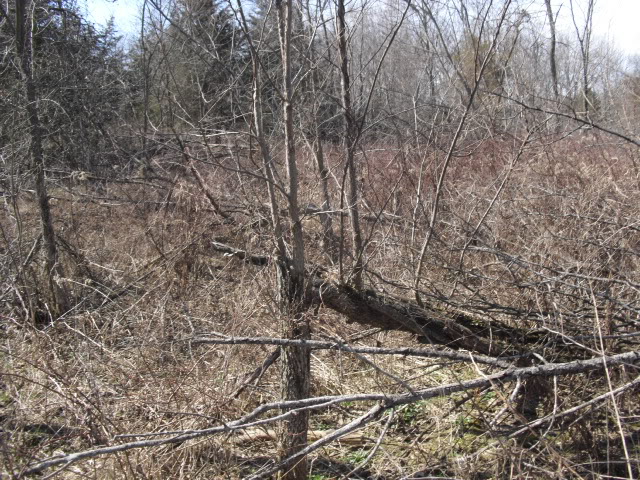
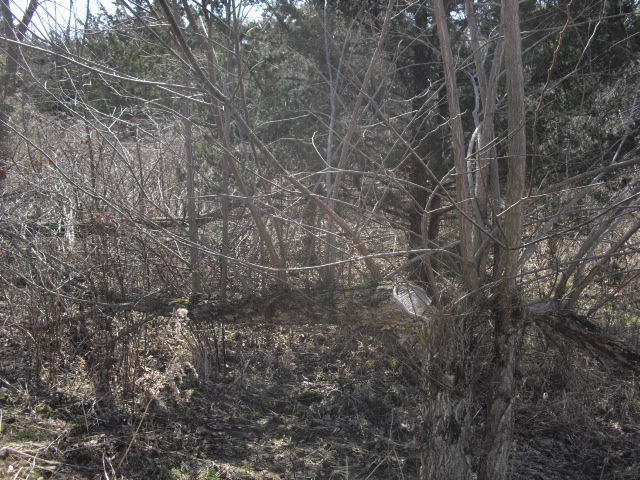
Eventually it all turns into a mass of brushy cover where deer feel safe
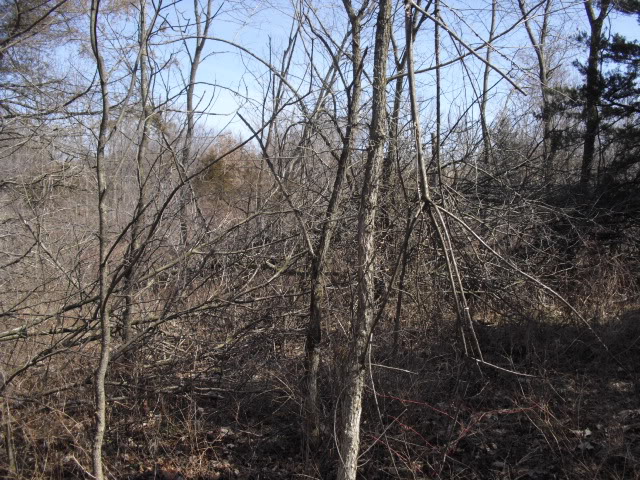
This pic shows the heavy browsing that also takes place...yet another advantage of hinging.
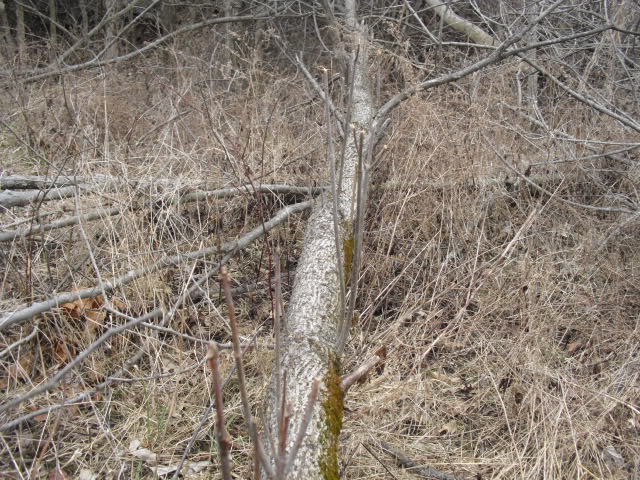
The edge feathering not only funnels deer but eventually creates a thick screen of brush and browse.
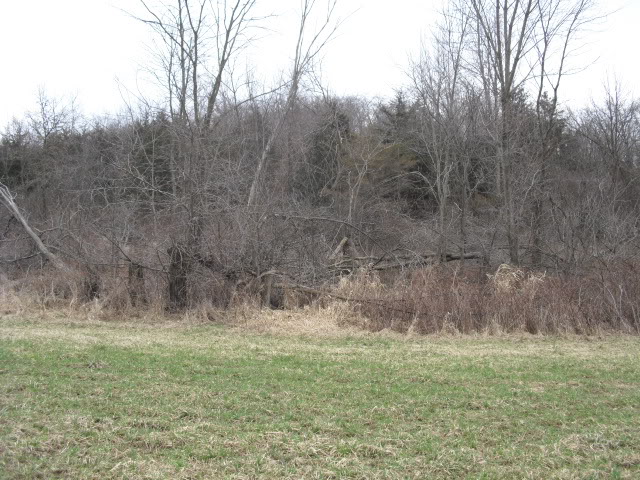
I've posted many TC pics of the kind of bucks that live in these "jungles" with no "leaf raking" required but they also leave other evidence...
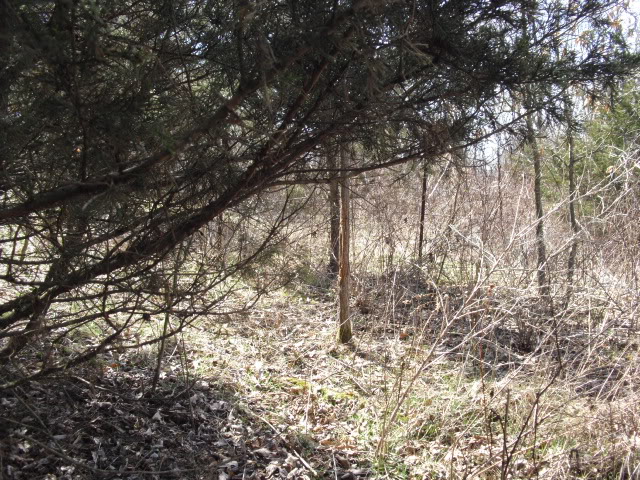
Do what you feel is best in your situation to achieve your goals but most of you will find that spending more time with a chainsaw then a rake will yield better results...
Too many folks have tried it an been deeply dissapointed however so I continue to share what has worked for us and that's a combination of hinging large areas and using conifer plantings to provide screens and safe bedding.
These trees have been hinged for several years now and reveal how much "brush" or cover they create in time!



Eventually it all turns into a mass of brushy cover where deer feel safe

This pic shows the heavy browsing that also takes place...yet another advantage of hinging.

The edge feathering not only funnels deer but eventually creates a thick screen of brush and browse.

I've posted many TC pics of the kind of bucks that live in these "jungles" with no "leaf raking" required but they also leave other evidence...

Do what you feel is best in your situation to achieve your goals but most of you will find that spending more time with a chainsaw then a rake will yield better results...
IQDM
New Member
most of you will find that spending more time with a chainsaw then a rake will yield better results...
HA HA hopefully this doesn't turn into a TL discussion, but I would have to agree!